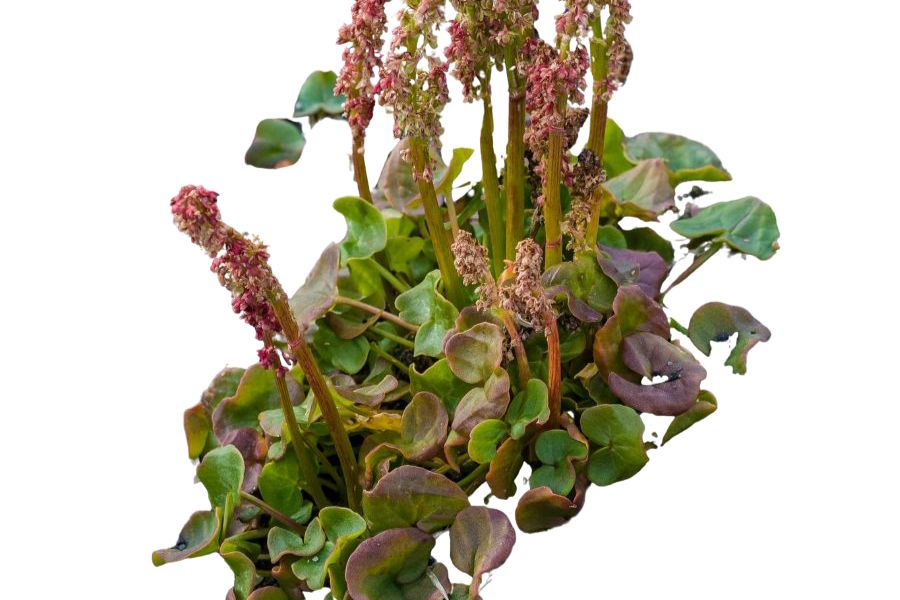Nature gives us many wonderful gifts. Wyoming’s landscape is filled with plants you can eat right from the ground. These edible plants grow freely across the state’s mountains, forests, and plains.
Learning about wild foods connects us to the land. People have gathered these plants for food and medicine for thousands of years. Native tribes of Wyoming knew exactly when and where to find each edible plant.
Foraging brings fresh food straight to your table. The plants you collect yourself often contain more nutrients than store-bought options. They also taste different, sometimes stronger or more complex than what you find in grocery stores.
However, safety must come first when collecting wild plants. Some edible plants look very similar to poisonous ones. Taking time to learn proper identification will keep you safe on your foraging adventures.
Let’s explore the most common edible plants in Wyoming together. This knowledge might spark a new hobby or help during outdoor trips.
What We Cover In This Article:
- The Edible Plants Found in the State
- Toxic Plants That Look Like Edible Plants
- How to Get the Best Results Foraging
- Where to Find Forageables in the State
- Peak Foraging Seasons
- The extensive local experience and understanding of our team
- Input from multiple local foragers and foraging groups
- The accessibility of the various locations
- Safety and potential hazards when collecting
- Private and public locations
- A desire to include locations for both experienced foragers and those who are just starting out
Using these weights we think we’ve put together the best list out there for just about any forager to be successful!
A Quick Reminder
Before we get into the specifics about where and how to find these plants and mushrooms, we want to be clear that before ingesting any wild plant or mushroom, it should be identified with 100% certainty as edible by someone qualified and experienced in mushroom and plant identification, such as a professional mycologist or an expert forager. Misidentification can lead to serious illness or death.
All plants and mushrooms have the potential to cause severe adverse reactions in certain individuals, even death. If you are consuming wild foragables, it is crucial to cook them thoroughly and properly and only eat a small portion to test for personal tolerance. Some people may have allergies or sensitivities to specific mushrooms and plants, even if they are considered safe for others.
The information provided in this article is for general informational and educational purposes only. Foraging involves inherent risks.
The Edible Plants Found in the State
Wild plants found across the state can add fresh, seasonal ingredients to your meals:
Chokecherry (Prunus virginiana)
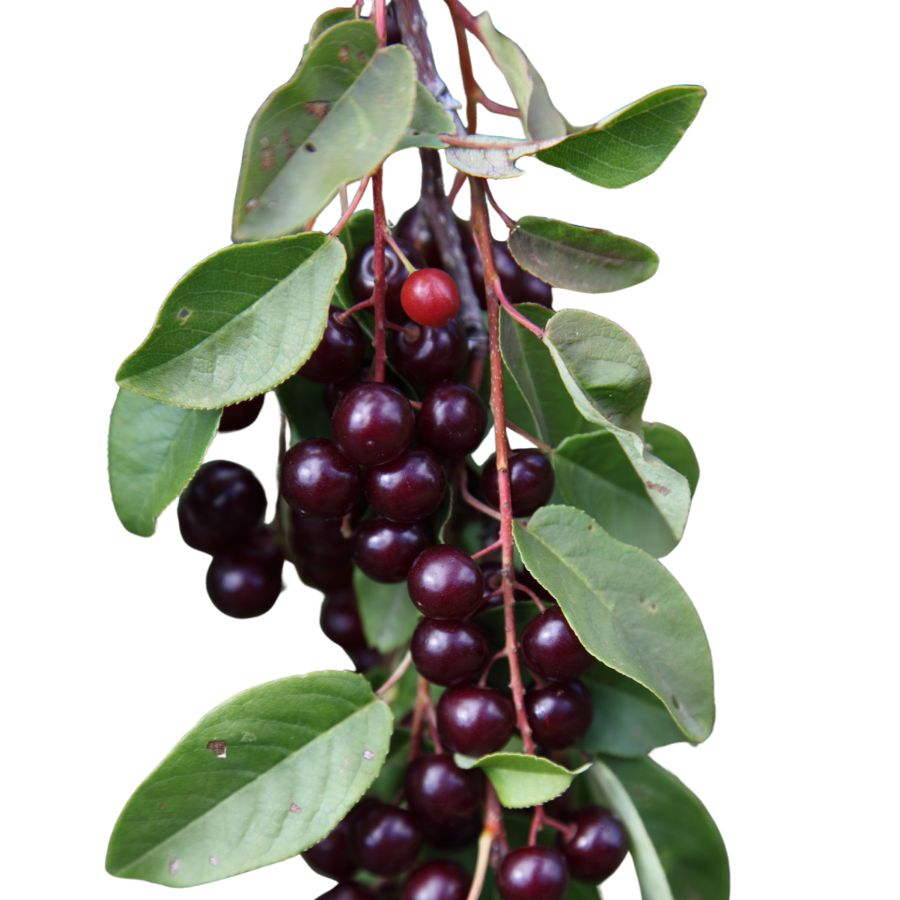
Clusters of dark berries hanging from a woody shrub usually indicate chokecherries, especially when the leaves are oval with finely toothed edges. These berries turn from red to deep purple or black when they’re ready to eat.
Chokecherries are rarely eaten raw due to their bitterness, but they shine in cooked recipes like preserves, sauces, or even homemade wine. Boiling the fruit and straining it helps separate the pulp from the inedible seeds.
It’s easy to mix up chokecherries with other wild cherries, but true chokecherries have longer, narrower leaves and a more astringent taste. Avoid anything with rounder, solitary berries or a sweet scent without the signature tartness.
Their texture is slightly gritty around the pit, and the flavor improves significantly with sugar and heat. A strong astringent quality dominates the raw berry, but the processed pulp becomes rich and deeply flavored.
Arrowleaf Balsamroot (Balsamorhiza sagittata)
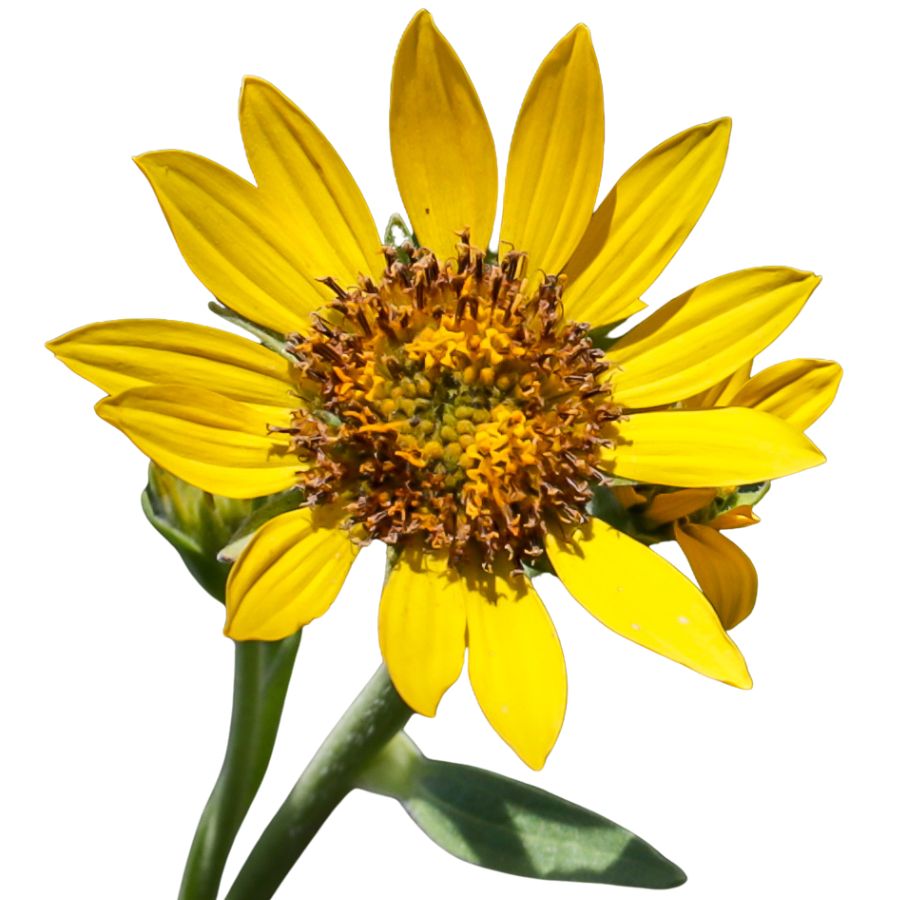
Arrowleaf Balsamroot stands out with its large arrow-shaped leaves and bright yellow flowers that resemble small sunflowers. The entire plant grows from a deep taproot that Indigenous peoples have used for food and medicine for centuries.
The leaves, roots, and seeds of this plant are all edible. Young leaves can be eaten raw in salads or cooked like spinach. The roots have a strong pine-like flavor and are best harvested in fall or early spring.
When identifying Arrowleaf Balsamroot, look for the distinct arrow-shaped leaves covered in fine silvery hairs. The plant produces single flower stalks with sunny yellow blooms that face the sky.
No dangerous lookalikes exist, making it a safe choice for beginner foragers. The roots contain nutritious starches and oils that provide good energy. Most foragers enjoy the nutty flavor of the seeds, which can be eaten raw or roasted.
Gooseberry (Ribes inerme)
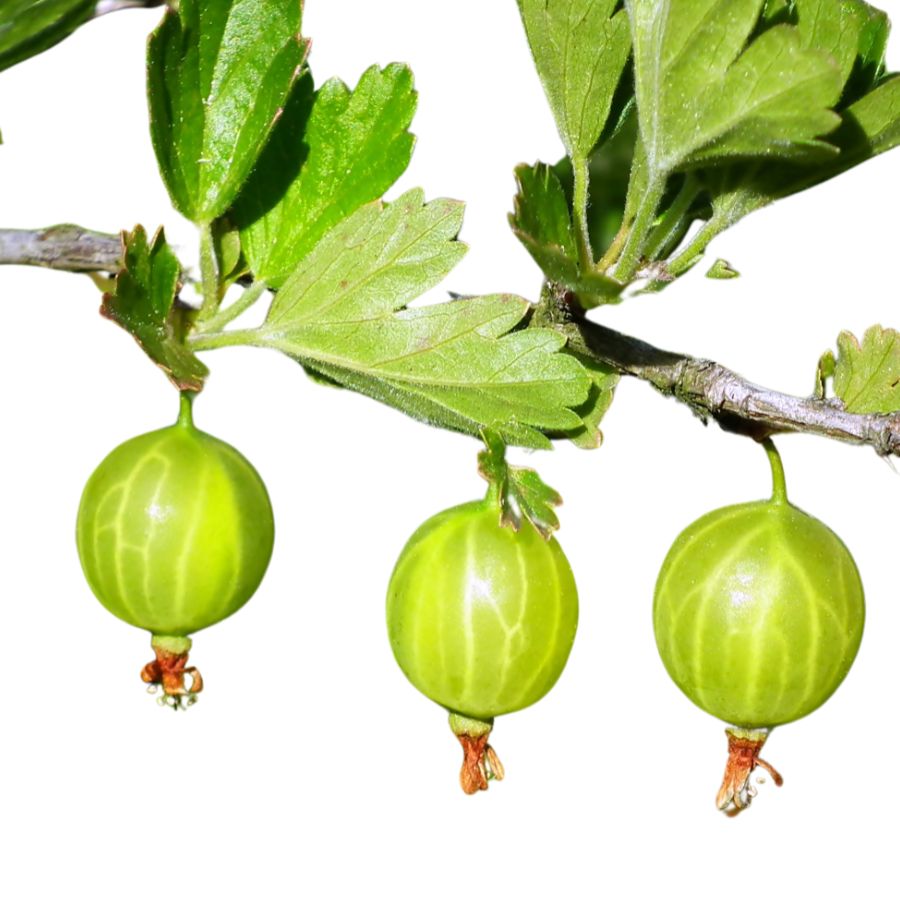
Thorny branches protect the treasure of wild gooseberries, small translucent fruits that hang like jewels on the shrub. These berries offer a complex flavor balancing sweetness and tartness that changes as they ripen from green to purple.
Wild gooseberry bushes typically grow 3-5 feet tall in partially shaded areas. The thorny stems and lobed leaves help identify this plant in the wild. Look for the distinctive thorns and maple-like leaves to avoid confusion with other berries.
The berries are the only edible part of the plant. Other parts contain compounds that may cause stomach upset if eaten in large amounts.
No truly dangerous lookalikes exist, though currants are relatives that look similar but lack thorns. Rich in vitamin C and antioxidants, gooseberries make excellent jams, pies, and fresh eating for the patient forager willing to navigate the thorns.
Wild Mint (Mentha arvensis)

You’re probably familiar with the strong scent of wild mint, which comes from the essential oils concentrated in its leaves. It has square stems, lance-shaped leaves with slightly toothed edges, and pale lilac flower clusters.
The fresh leaves can be eaten raw, cooked into soups, or muddled into drinks for a crisp flavor. Expect a bright, menthol-like kick with a hint of sweetness.
False mint species like purple deadnettle grow in similar spots but lack the menthol smell and have fuzzy leaves. If the plant doesn’t smell like mint, it probably isn’t.
Stick to the leaves and younger stems for eating because the woody stalks aren’t palatable. Wild mint also holds up well when dried and stored for tea or seasoning.
Spring Beauty (Claytonia lanceolata)
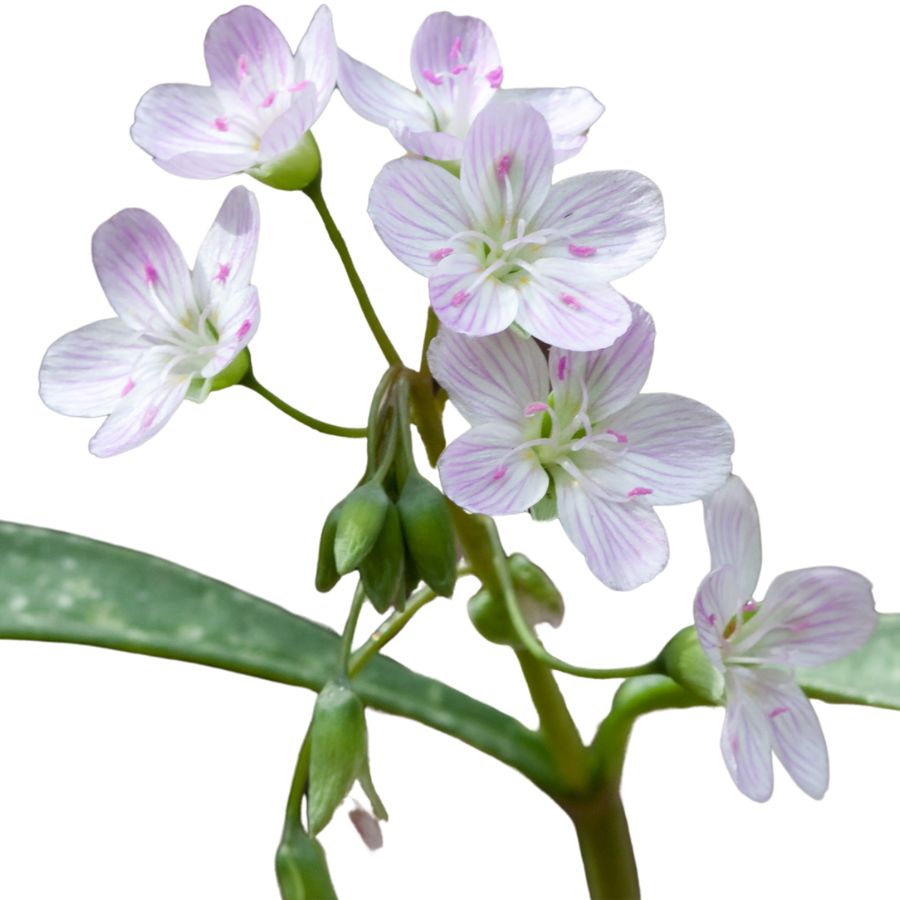
Delicate white to pink flowers with five petals and dark pink veins mark these small woodland plants that emerge soon after snow melts. Spring Beauty grows from a small, starchy corm that tastes similar to potatoes but with a more nutty flavor.
The corms can be eaten raw or cooked and were an important food source for many Native American tribes. These small tubers store well and provide carbohydrates and some protein.
Spring Beauty plants grow only 4-6 inches tall with pairs of lance-shaped leaves. Their small size and early bloom time make them easy to overlook.
When foraging Spring Beauty, dig carefully around the plant to find the small corm beneath. The flowers and leaves are also edible and make attractive additions to salads. No toxic lookalikes exist, though Death Camas grows in similar areas but has different flowers and is highly toxic.
Yampa (Perideridia gairdneri)

Yampah, also known as wild carrot or Indian carrot, grows with feathery, fern-like leaves and small white flowers arranged in delicate clusters. It has slender roots that resemble thin parsnips, often buried just a few inches underground.
The root is the edible part and has a sweet, nutty flavor with a crisp texture when fresh. You can roast it, boil it like a vegetable, or dry it for later use in stews and broths.
It is very important to properly identify yampah, because it looks a lot like toxic plants such as poison hemlock and water hemlock. A true yampah root will smell pleasantly carrot-like when snapped, unlike the unpleasant or musty odor of its deadly lookalikes.
In addition to being a food source, yampah roots were traditionally used by Indigenous peoples for both nourishment and trade. The roots are small, so you often have to gather quite a few to make a meal, but their rich flavor makes the effort worthwhile.
Fireweed (Chamerion angustifolium)
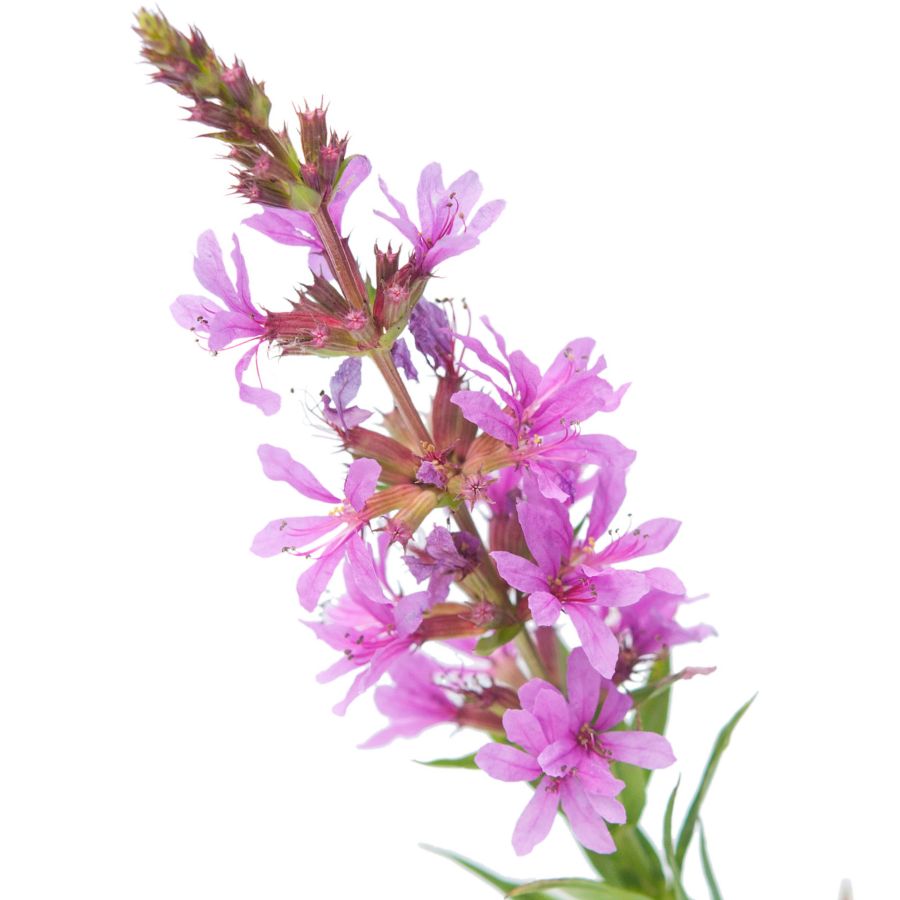
Fireweed displays tall spikes of vibrant magenta flowers that are instantly recognizable across meadows and recently burned areas. This plant earned its name from being one of the first to return after forest fires, bringing color back to blackened landscapes.
Young shoots and leaves of Fireweed taste similar to asparagus when harvested in spring before they become tough. The pith inside older stems can be scraped out and eaten raw or cooked.
Identifying Fireweed is easy with its tall growth habit, narrow leaves with light-colored veins, and column of bright pink-purple flowers that bloom from bottom to top. Each flower produces fluffy seeds that float away on the wind.
The young leaves contain vitamin C and can be brewed into tea. Indigenous peoples used Fireweed to treat burns and stomach issues. No toxic lookalikes exist, making this a safe plant for new foragers.
Ground Cherry (Physalis longifolia)
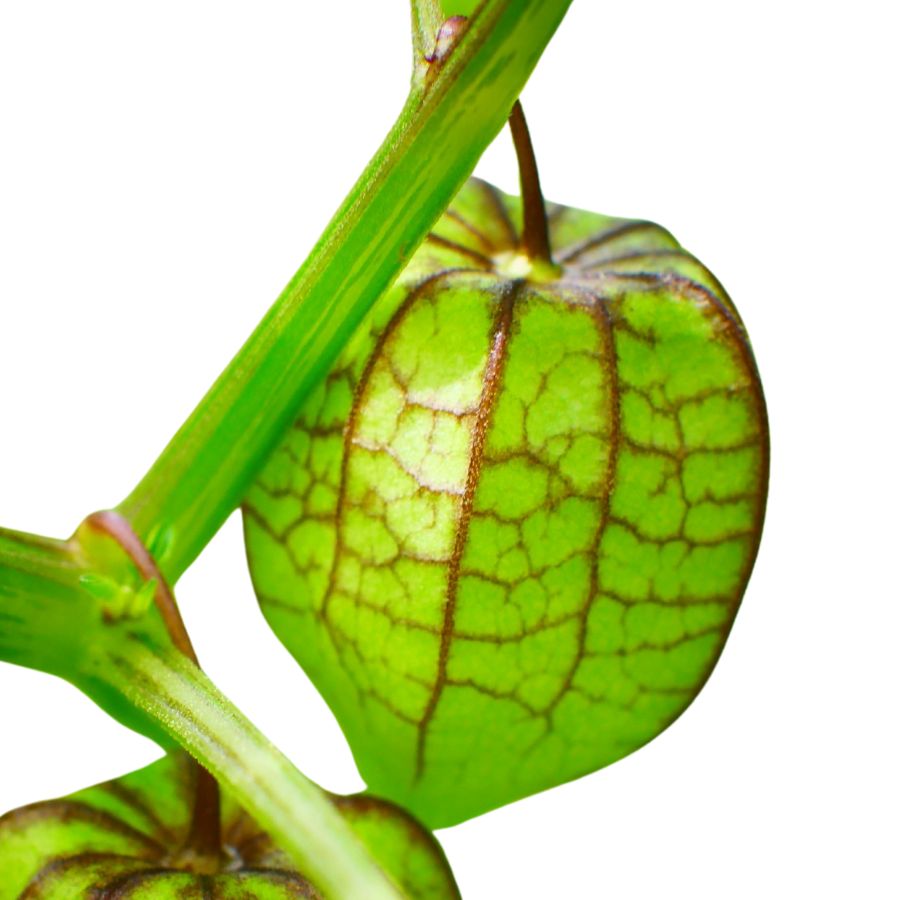
Ground Cherry plants produce lantern-like husks that conceal golden fruits similar to tiny tomatoes. These small fruits have a unique flavor that combines pineapple, vanilla, and tomato notes, making them sought after by foraging enthusiasts.
Only the fully ripe, golden-yellow berries are safe to eat. Unripe green fruits contain solanine and should be avoided. The husks, leaves, and stems are not edible.
Ground Cherry plants grow 1-3 feet tall with oval leaves and small yellow flowers. The most distinctive feature is the papery husk that forms around each fruit as it develops.
When identifying Ground Cherry, look for the characteristic husks and the plant’s overall resemblance to tomato plants. Deadly nightshade is a dangerous lookalike, but its berries grow directly on the stem without husks. Ground Cherries contain vitamins A and C, making them nutritious trail snacks or additions to preserves and desserts.
Evening Primrose (Oenothera biennis)
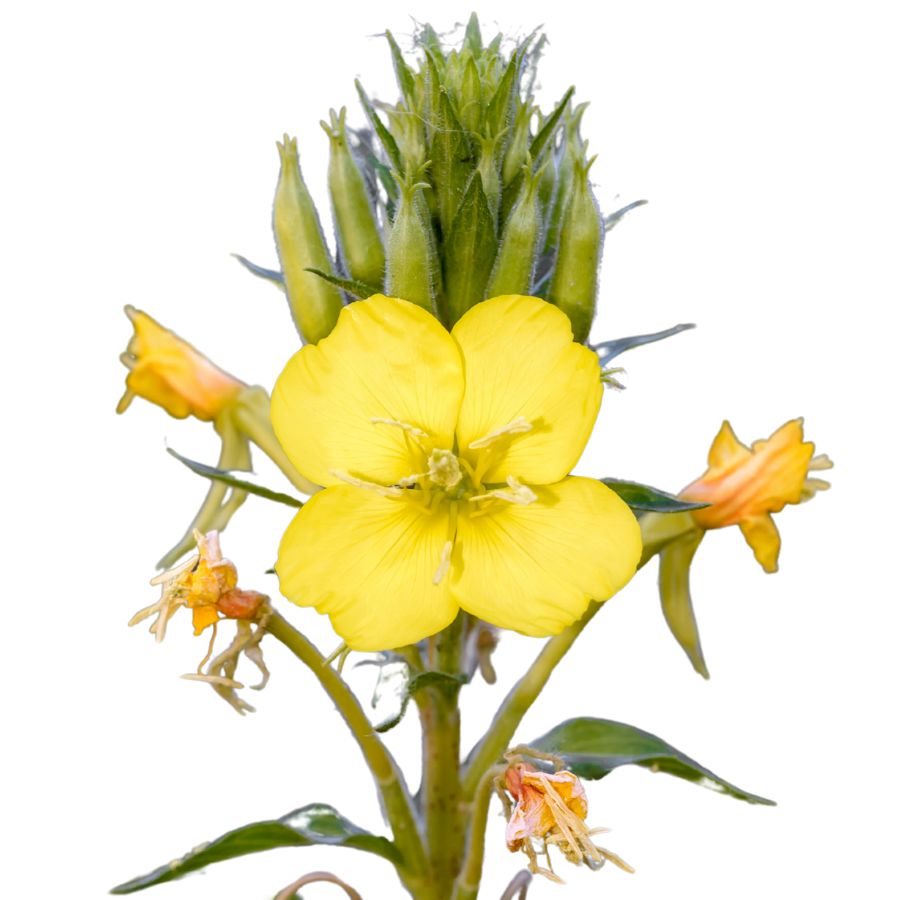
The bright yellow blooms of common evening primrose, or hog weed as it’s also called, only open in low light and tend to wilt by morning. It has a coarse stem and elongated leaves that spiral upward, with buds that cluster near the top.
Its root has a taste similar to salsify and works well roasted or baked. Flower buds and young leaves are sometimes boiled like spinach to reduce bitterness.
Some parts of the plant resemble helenium, which is not safe to eat—helenium leaves are narrower and more aromatic when crushed. The seeds of common evening primrose can be ground into a paste or flour-like mix for cooking.
Though many parts of the plant are used in food, the flower stalks get tough quickly and aren’t usually eaten. Stick with the first-year roots and early foliage for better flavor and texture.
Buffaloberry (Shepherdia canadensis)
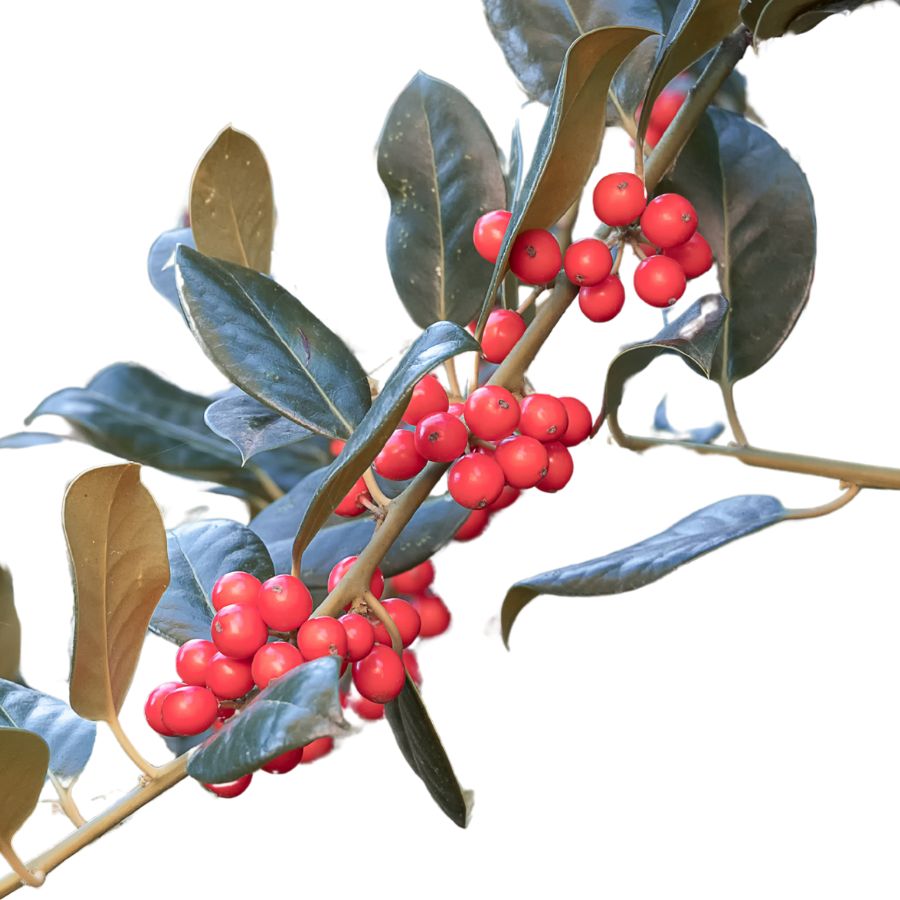
Buffaloberry grows as a shrub with small, oval leaves covered in tiny copper-colored scales. The plant produces bright red berries that have a tart, acidic taste with a slightly bitter aftertaste. Native American tribes used these berries to make pemmican and medicinal teas.
The edible berries appear in clusters along the branches and are best harvested after the first frost when they become sweeter. When foraging, look for the distinctive silvery-copper underside of the leaves and the absence of thorns, which helps distinguish it from similar-looking shrubs.
Wild buffaloberries are rich in vitamins A and C, making them nutritionally valuable. They can be used in jellies, jams, and sauces, or dried for later use. The seeds inside are edible, but some people prefer to strain them out when making preserves.
Western Sweet Cicely (Osmorhiza occidentalis)

With fern-like leaves and a distinct anise scent when crushed, Western Sweet Cicely stands out in forest understories. Its white flowers form umbrella-shaped clusters, and the whole plant gives off a pleasant licorice aroma that helps with identification.
The roots, leaves, and seeds are all edible parts of this plant. The young roots can be cooked like carrots or eaten raw, while the leaves add flavor to salads. Seeds can be used as a spice similar to anise.
Western Sweet Cicely belongs to the carrot family, so careful identification is crucial. Unlike poisonous water hemlock or fool’s parsley, Sweet Cicely has soft, fuzzy leaves and a strong licorice smell.
Never harvest carrot family plants without absolute certainty of identification. The plant has traditionally been used to sweeten foods and as a digestive aid.
Dandelion (Taraxacum officinale)
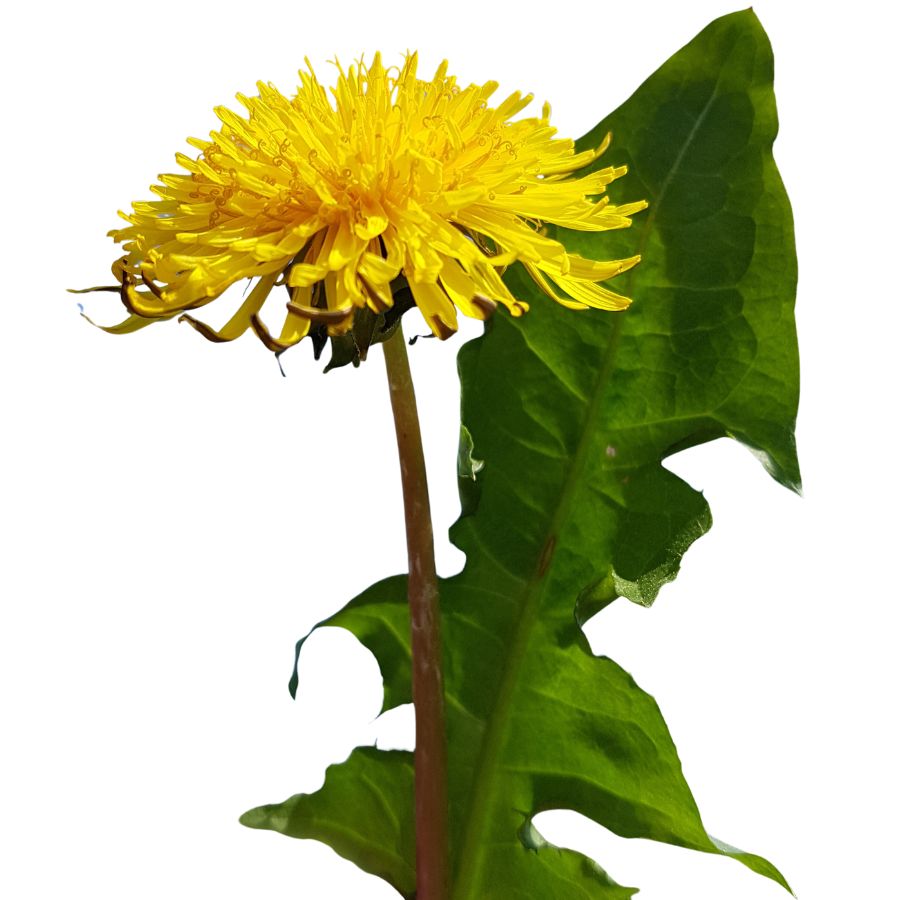
Bright yellow flowers and jagged, deeply toothed leaves make dandelions easy to spot in open fields, lawns, and roadsides. You might also hear them called lion’s tooth, blowball, or puffball once the flowers turn into round, white seed heads.
Every part of the dandelion is edible, but you will want to avoid harvesting from places treated with pesticides or roadside areas with heavy car traffic. Besides being a food source, dandelions have been used traditionally for simple herbal remedies and natural dye projects.
Young dandelion leaves have a slightly bitter, peppery flavor that works well in salads or sautés, and the flowers can be fried into fritters or brewed into tea. Some people even roast the roots to make a coffee substitute with a rich, earthy taste.
One thing to watch out for is cat’s ear, a common lookalike with hairy leaves and branching flower stems instead of a single, hollow one. To make sure you have a true dandelion, check for a smooth, hairless stem that oozes a milky sap when broken.
Wild Licorice (Glycyrrhiza lepidota)
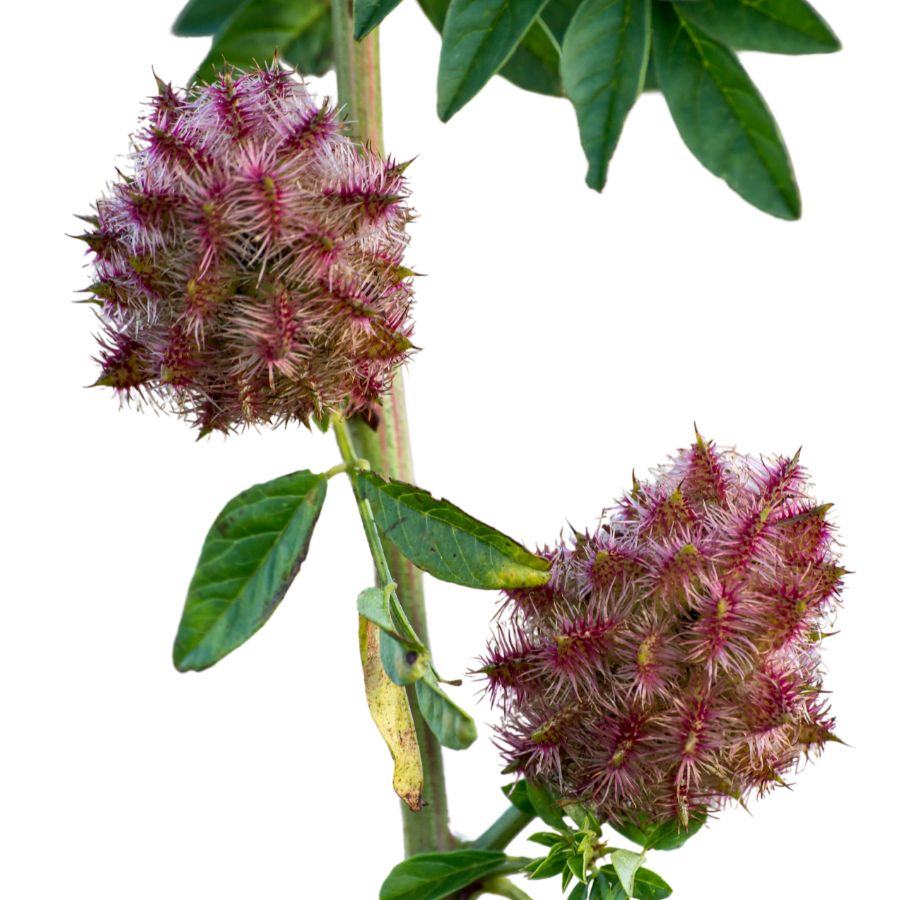
Standing up to 3 feet tall with compound leaves arranged in pairs, Wild Licorice features small yellowish-white flower clusters that develop into distinctive burr-like seed pods. These sticky seed pods easily attach to clothing and animal fur, earning the plant its nickname “stickyweed” in some regions.
Wild Licorice roots contain glycyrrhizin, which makes them up to 50 times sweeter than sugar. The roots are the primary edible part, traditionally used to make tea, candy, and medicine. They can be chewed raw or dried for later use.
Identifying features include its paired leaflets, pea-like flowers, and burr-covered seed pods. Native Americans used wild licorice roots to treat sore throats, coughs, and stomach problems, making this plant both a food and a medicine resource.
Prickly Pear Cactus (Opuntia polyacantha)
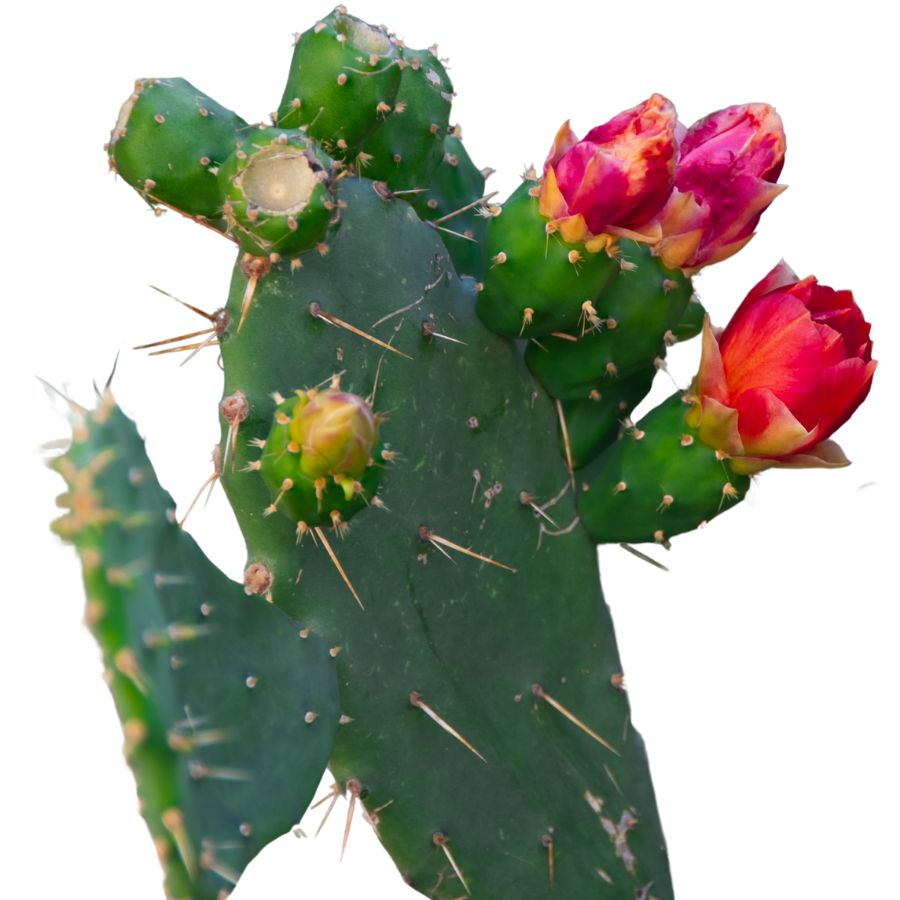
Flat, pad-shaped segments covered in clusters of spines make the Prickly Pear Cactus instantly recognizable. Each pad contains tiny barbed bristles called glochids that can easily penetrate skin. The cactus produces vibrant yellow flowers that develop into reddish-purple fruits.
Both the pads and fruits are edible but require careful preparation to remove spines and glochids. Young pads, called nopales, are harvested in spring and can be grilled or boiled. The sweet fruits, or tunas, ripen in late summer and taste like watermelon with hints of strawberry.
To harvest safely, use thick gloves and tongs. Burn off the remaining glochids by passing pads and fruits quickly through an open flame.
Prickly pear has been valued for centuries as a survival food in arid regions, offering both nutrition and hydration. The fruits can be eaten fresh, made into juice, or turned into jelly.
Pinyon Pine (Pinus monophylla)
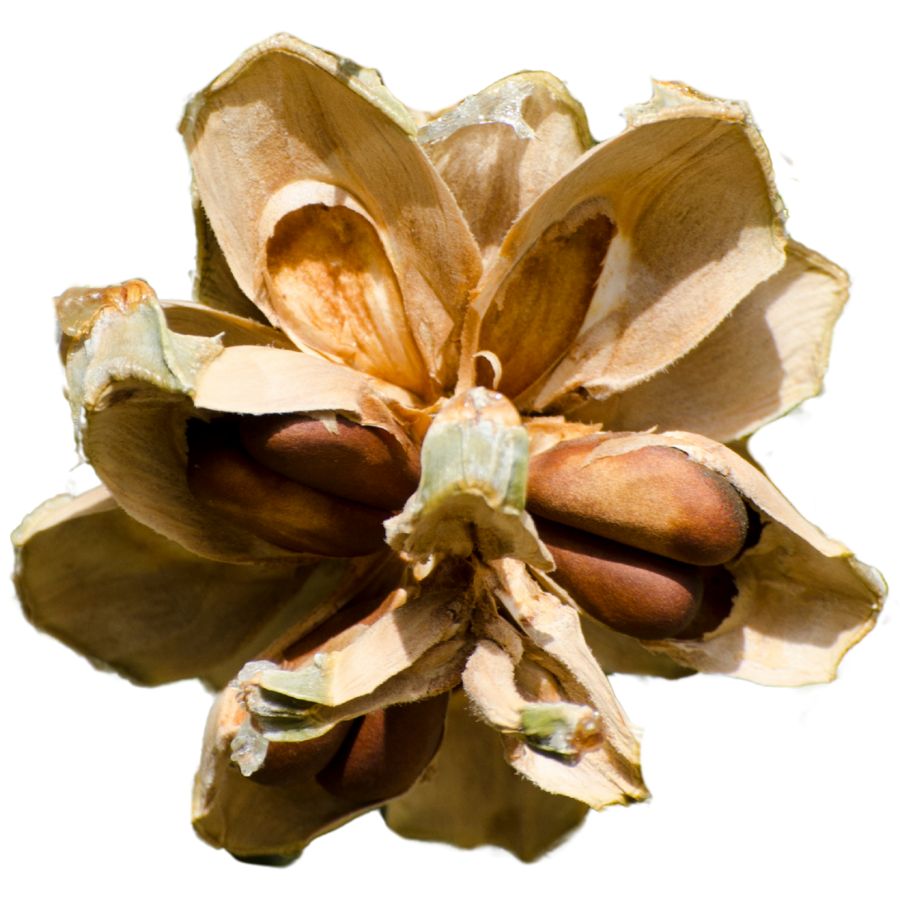
The pinyon pine, sometimes called single-leaf pinyon, is easy to spot because it has just one needle per bundle instead of the usual two or more. The tree stays small and bushy, with a rounded shape and dense clusters of short, bluish-green needles.
The pine nut hidden inside the thick-shelled cones is the only edible part of the tree, and it has a rich, buttery flavor when eaten raw or roasted. The seeds are small compared to commercial pine nuts but have a soft, slightly chewy texture that makes them easy to enjoy by the handful.
You can crack open the shells and eat the seeds fresh, toast them lightly to bring out a deeper flavor, or grind them into sauces or spreads. Only the seeds are edible, so avoid nibbling on the cones, bark, or needles, which are not considered safe to eat.
Make sure not confuse the pinyon pine with other types of pines that either do not produce edible seeds or have seeds too small to bother collecting. Single-leaf pinyon cones are larger and rounder than many other pines, and the tree’s distinctive needle pattern helps make a positive ID.
Wild Onion (Allium spp.)
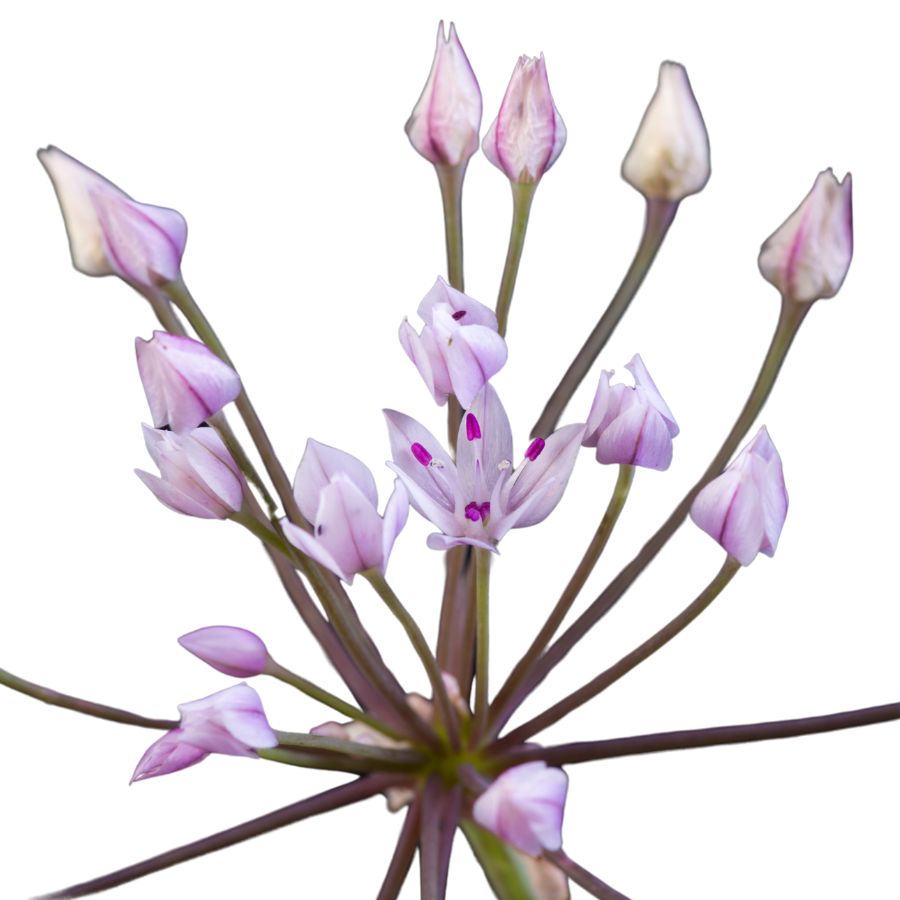
Wild onion, sometimes called meadow garlic or wild garlic, grows with slender green stems and small bulbs tucked just below the surface. The leaves are smooth, narrow, and hollow, giving off a sharp onion scent when crushed between your fingers.
The entire plant is edible, from the crisp bulbs to the tender stems and flowers. Its strong onion flavor can be used fresh, cooked into soups, or even pickled for longer storage.
One important thing to watch for is its lookalike, death camas, which has similar leaves but no onion smell and can be deadly if eaten. Always crush a leaf and check for that familiar onion scent before harvesting any wild onion.
Wild onion adds a punch of flavor to dishes like scrambled eggs, roasted meats, and vegetable sautés. Besides cooking, it has a long history of being used in herbal remedies for colds and minor infections.
Mountain Sorrel (Oxyria digyna)
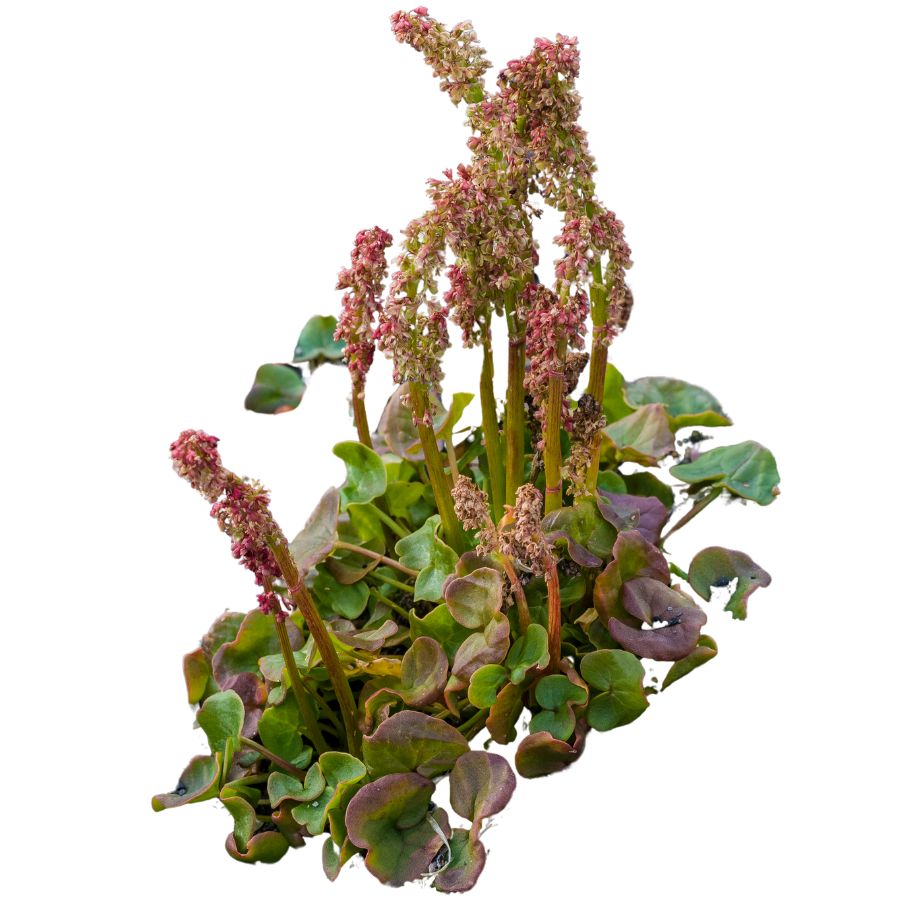
If you’re hiking in alpine zones, mountain sorrel is the low-growing plant with rounded, clover-like leaves and a reddish stem that you’ll find hugging the rocks. The leaves are the edible part and have a crisp texture with a sharp, lemony flavor that hits right away.
Mountain sorrel has no dangerous lookalikes, though it can be confused with sheep sorrel, which has arrow-shaped leaves instead of round ones. You can eat it raw or chop it into soups and broths to add a tangy bite.
The flavor comes from its high oxalic acid content, which means you shouldn’t eat large amounts if you have kidney issues. That same acid gives it a clean, sour taste that cuts through rich dishes easily.
People preserve mountain sorrel by drying the leaves or steeping them in vinegar to hold onto the tartness. The stems and flowers are technically edible but aren’t as pleasant as the leaves.
Salsify (Tragopogon dubius)
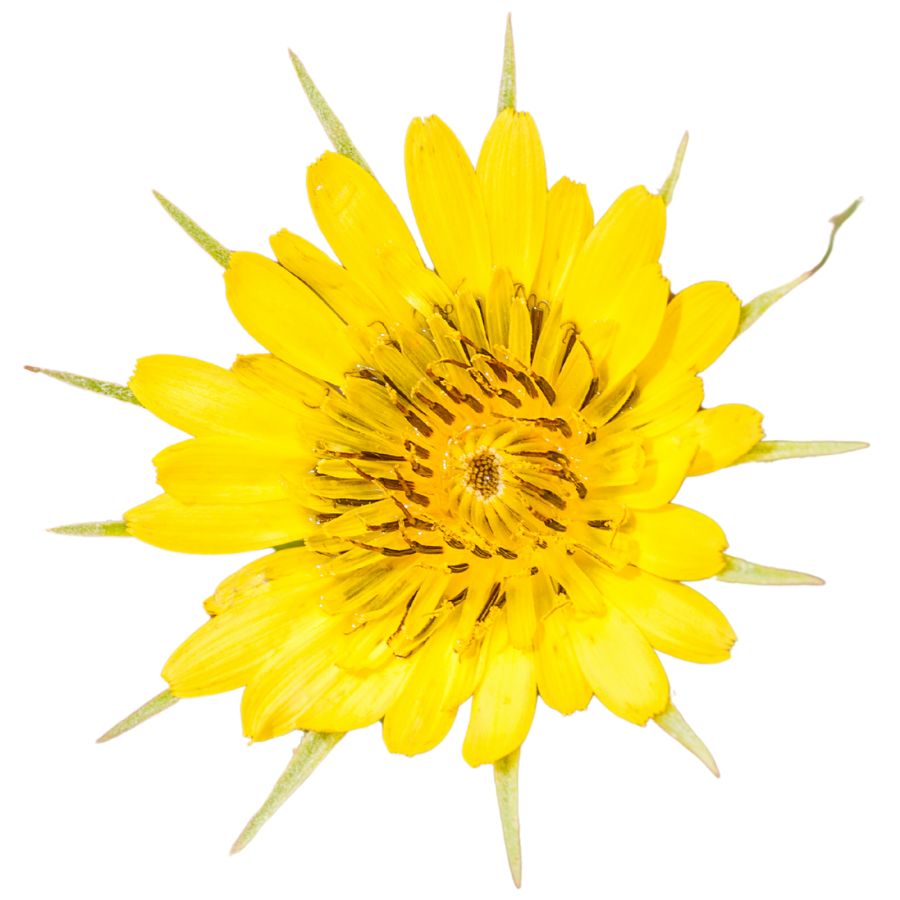
Yellow salsify has a large puffball seed head that resembles a dandelion but is much bigger, and its flower has sharp, pointed petals. You’ll usually see a single stem with long, narrow leaves that run directly along the stalk without branching.
The thick taproot is the main edible part and is often peeled and cooked like a vegetable—its flavor is mild with a hint of oyster and nuttiness. Some people ferment or pickle the root to preserve it.
You can also eat the flower buds before they open, and the stems can be peeled and steamed for a tender, slightly sweet bite. The root becomes stringy if you let it age too long before harvesting.
Don’t confuse it with wild lettuce or sow thistle, which have similar leaves but don’t form the same large spherical seed head and usually grow more branched stems. Unlike those, yellow salsify has a distinct single flower per stem and smoother, less bitter leaves.
Broadleaf Arrowhead (Sagittaria latifolia)

Broadleaf Arrowhead gets its name from its distinctive arrow-shaped leaves that point skyward from shallow water. This aquatic plant grows in marshes, ponds, and along slow-moving streams, where its white three-petaled flowers bloom on tall stalks above the water surface.
The most prized part is its starchy tubers that grow at the end of underwater rhizomes. These tubers, sometimes called “duck potatoes,” were a staple food for many Native American tribes. They taste similar to potatoes but with a slightly sweeter flavor.
Harvesting requires wading or reaching into muddy water to feel for the tubers with your toes or a rake. The best time to collect them is fall when the plants begin to die back. Look for decaying leaves as markers of where to dig.
Clean the tubers thoroughly before cooking by peeling the brown outer skin. They can be boiled, roasted, or dried and ground into flour. Always leave some tubers behind to ensure the plant returns the following year
Wild Bergamot (Monarda fistulosa)
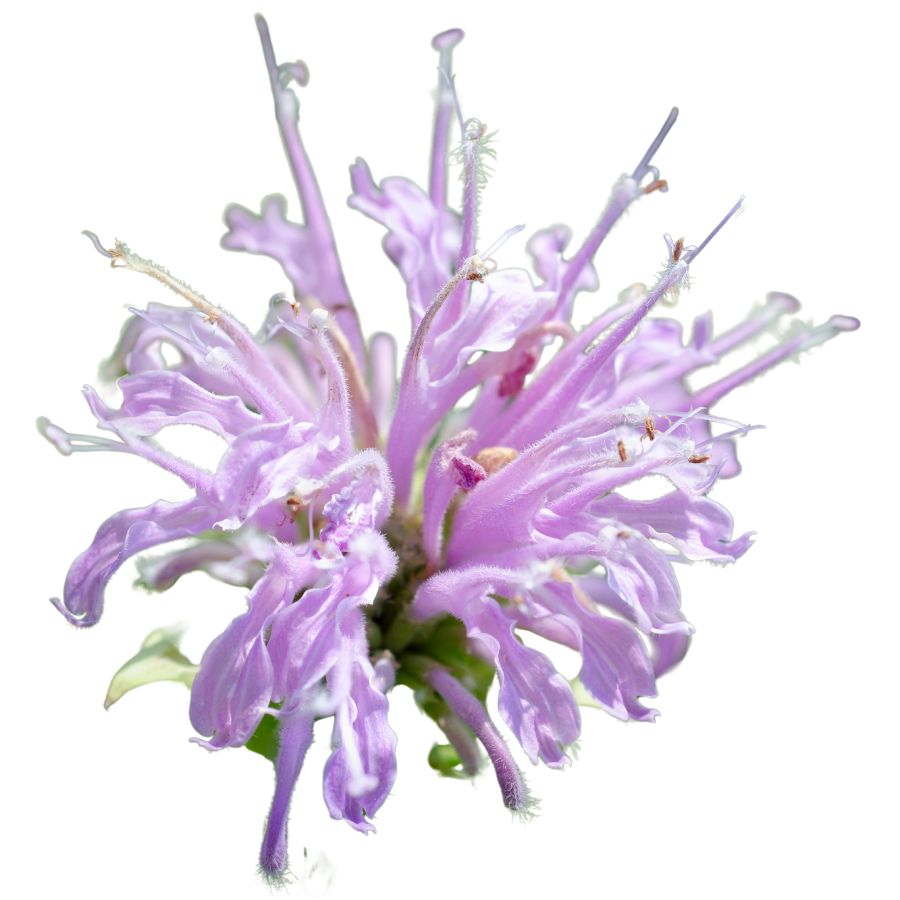
Wild bergamot has clusters of lavender-colored flowers and opposite leaves that smell like thyme when crushed. Its flavor leans herbal and minty, with a little bitterness that works well in marinades.
The flower heads are shaggy and irregular, and the plant’s square stem helps tell it apart from lookalikes like spotted horsemint.
In recipes, it’s most often dried and steeped or blended into herb mixes.
Both leaves and petals can be eaten, though most people avoid the stems. Don’t eat it in large amounts raw; it’s strong and can be overpowering.
It’s related to mint, and that shows in how fast the flavor develops when heat is applied. You’ll get the most aroma if you bruise the leaves before using them.
Toxic Plants That Look Like Edible Plants
There are plenty of wild edibles to choose from, but some toxic native plants closely resemble them. Mistaking the wrong one can lead to severe illness or even death, so it’s important to know exactly what you’re picking.
Poison Hemlock (Conium maculatum)
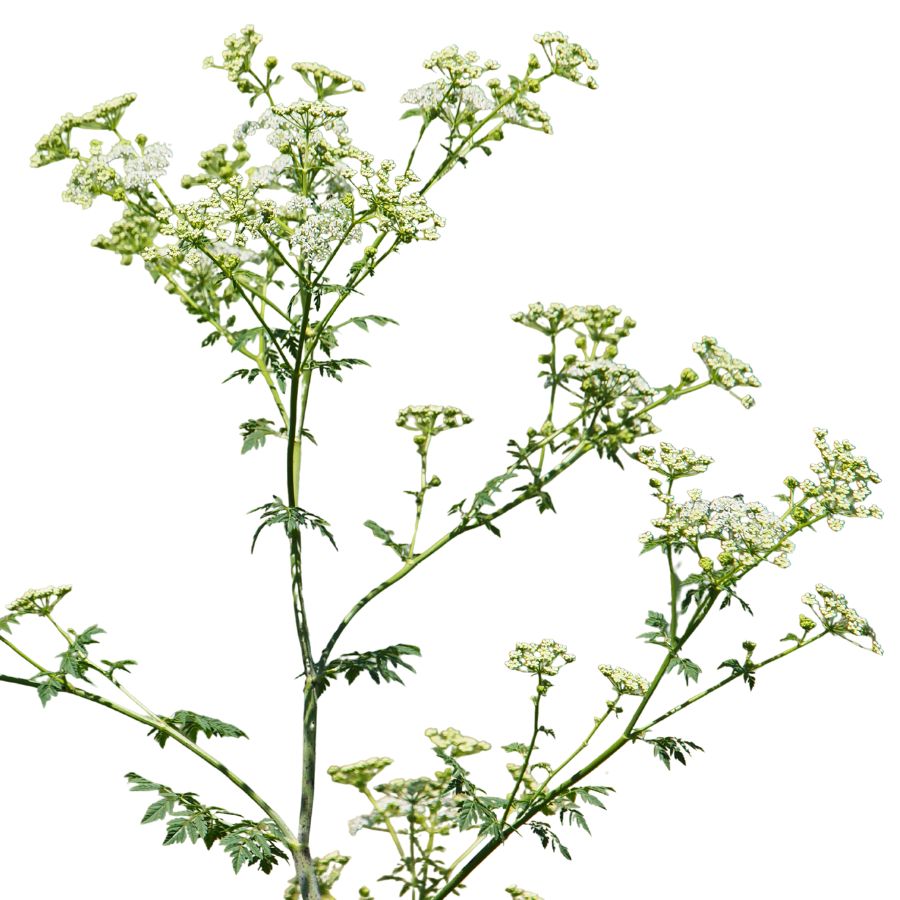
Often mistaken for: Wild carrot (Daucus carota)
Poison hemlock is a tall plant with lacy leaves and umbrella-like clusters of tiny white flowers. It has smooth, hollow stems with purple blotches and grows in sunny places like roadsides, meadows, and stream banks.
Unlike wild carrot, which has hairy stems and a dark central floret, poison hemlock has a musty odor and no flower center spot. It’s extremely toxic; just a small amount can be fatal, and even touching the sap can irritate the skin.
Water Hemlock (Cicuta spp.)
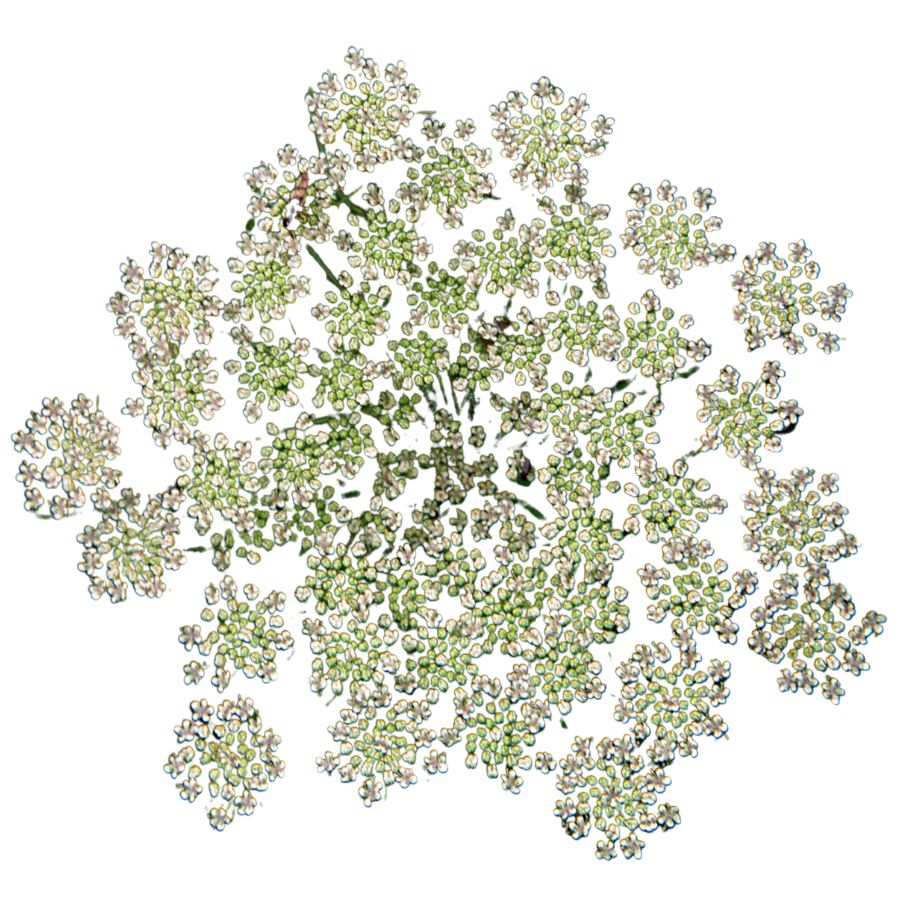
Often mistaken for: Wild parsnip (Pastinaca sativa) or wild celery (Apium spp.)
Water hemlock is a tall, branching plant with umbrella-shaped clusters of small white flowers. It grows in wet places like stream banks, marshes, and ditches, with stems that often show purple streaks or spots.
It can be confused with wild parsnip or wild celery, but its thick, hollow roots have internal chambers and release a yellow, foul-smelling sap when cut. Water hemlock is the most toxic plant in North America, and just a small amount can cause seizures, respiratory failure, and death.
False Hellebore (Veratrum viride)
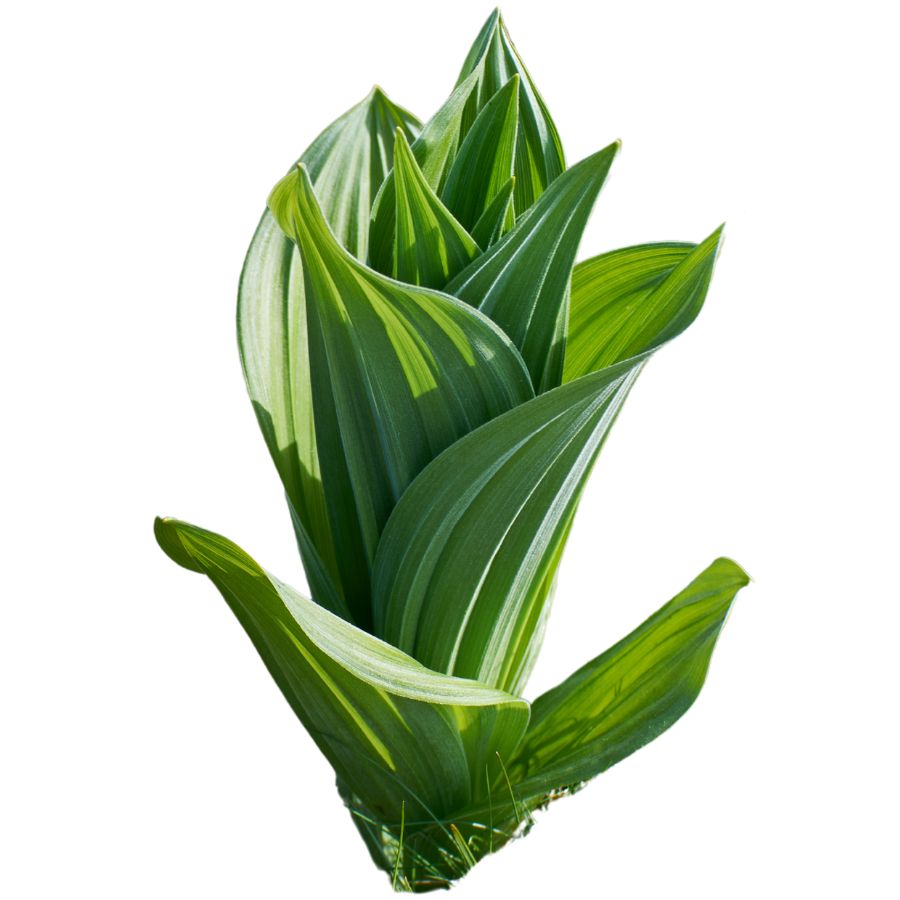
Often mistaken for: Ramps (Allium tricoccum)
False hellebore is a tall plant with broad, pleated green leaves that grow in a spiral from the base, often appearing early in spring. It grows in moist woods, meadows, and along streams.
It’s commonly mistaken for ramps, but ramps have a strong onion or garlic smell, while false hellebore is odorless and later grows a tall flower stalk. The plant is highly toxic, and eating any part can cause nausea, a slowed heart rate, and even death due to its alkaloids that affect the nervous and cardiovascular systems.
Death Camas (Zigadenus spp.)
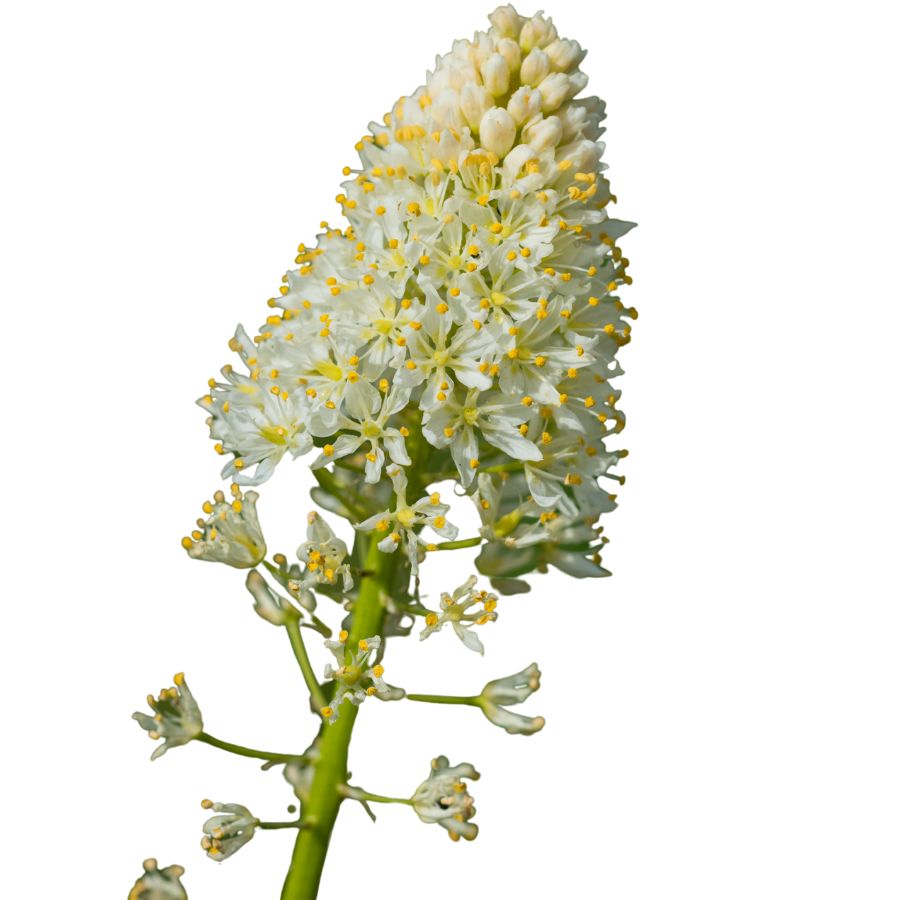
Often mistaken for: Wild onion or wild garlic (Allium spp.)
Death camas is a slender, grass-like plant that grows from underground bulbs and is found in open woods, meadows, and grassy hillsides. It has small, cream-colored flowers in loose clusters atop a tall stalk.
It’s often confused with wild onion or wild garlic due to their similar narrow leaves and habitats, but only Allium plants have a strong onion or garlic scent, while death camas has none. The plant is extremely poisonous, especially the bulbs, and even a small amount can cause nausea, vomiting, a slowed heartbeat, and potentially fatal respiratory failure.
Buckthorn Berries (Rhamnus spp.)
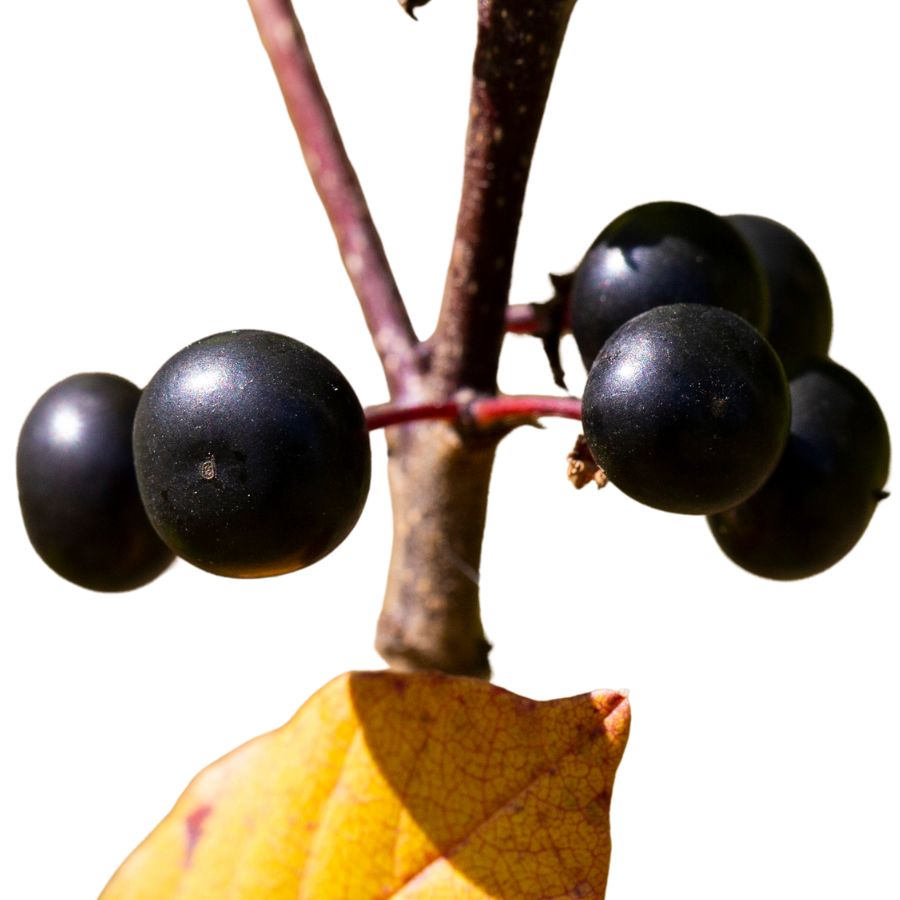
Often mistaken for: Elderberries (Sambucus spp.)
Buckthorn is a shrub or small tree often found along woodland edges, roadsides, and disturbed areas. It produces small, round berries that ripen to dark purple or black and usually grow in loose clusters.
These berries are sometimes mistaken for elderberries and other wild fruits, which also grow in dark clusters, but elderberries form flat-topped clusters on reddish stems while buckthorn berries are more scattered. Buckthorn berries are unsafe to eat as they contain compounds that can cause cramping, vomiting, and diarrhea, and large amounts may lead to dehydration and serious digestive problems.
Mayapple (Podophyllum peltatum)
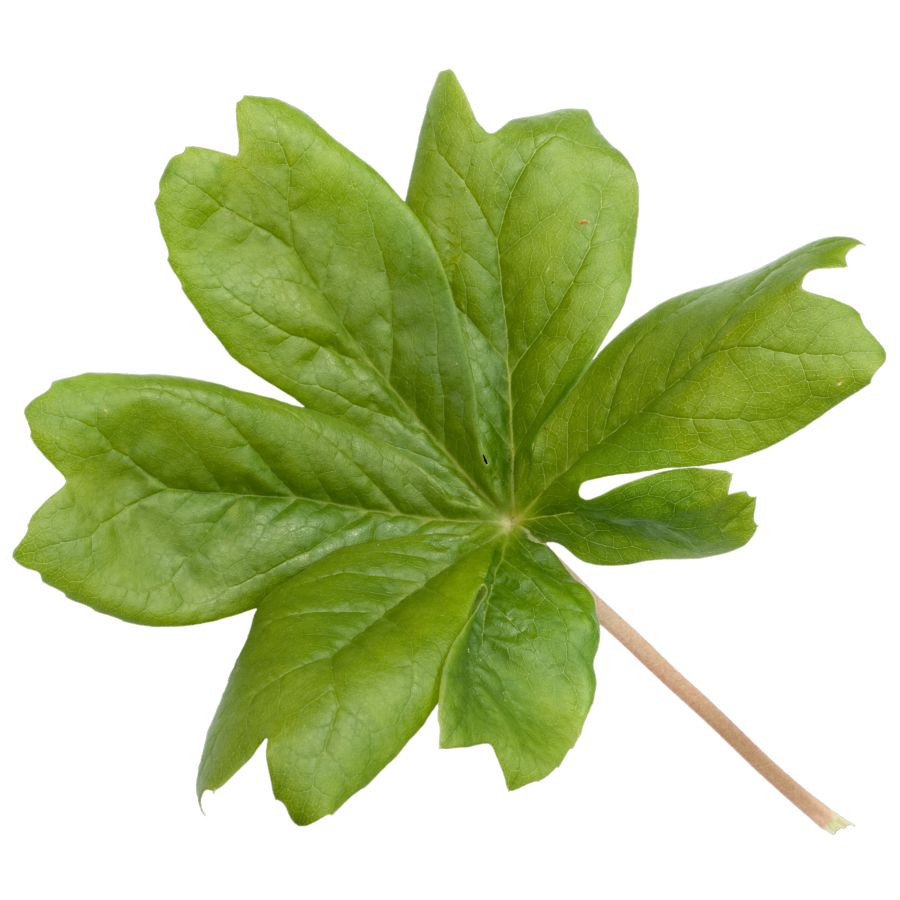
Often mistaken for: Wild grapes (Vitis spp.)
Mayapple is a low-growing plant found in shady forests and woodland clearings. It has large, umbrella-like leaves and produces a single pale fruit hidden beneath the foliage.
The unripe fruit resembles a small green grape, causing confusion with wild grapes, which grow in woody clusters on vines. All parts of the mayapple are toxic except the fully ripe, yellow fruit, which is only safe in small amounts. Eating unripe fruit or other parts can lead to nausea, vomiting, and severe dehydration.
Virginia Creeper (Parthenocissus quinquefolia)
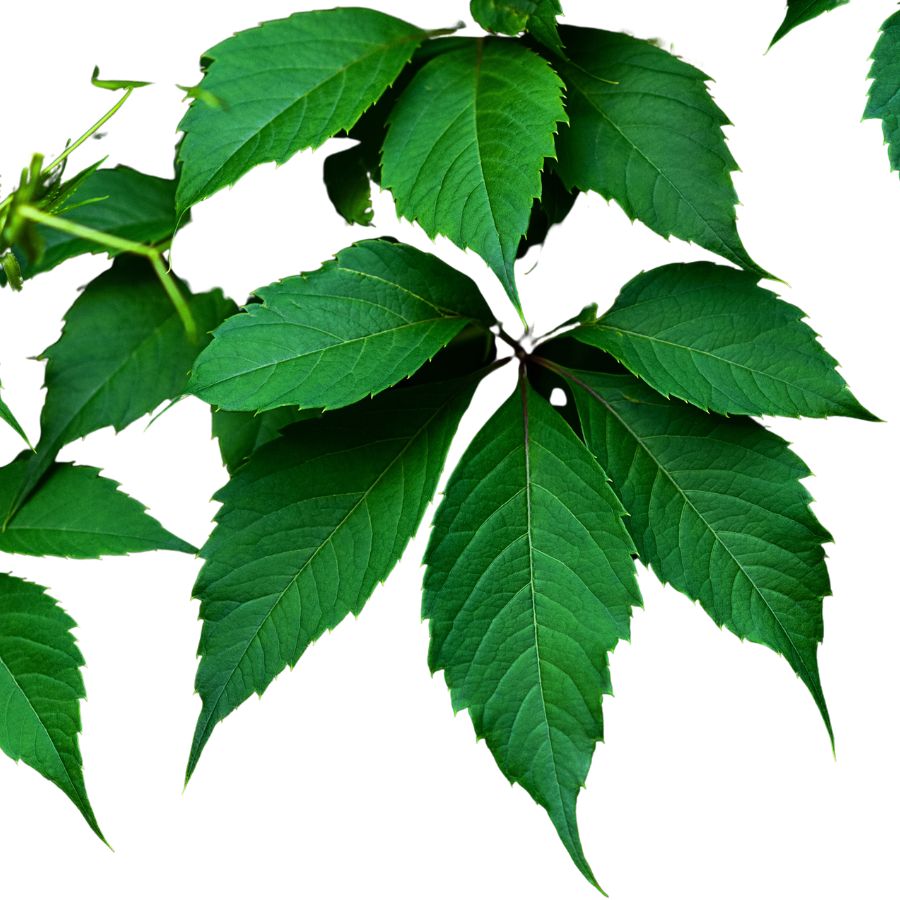
Often mistaken for: Wild grapes (Vitis spp.)
Virginia creeper is a fast-growing vine found on fences, trees, and forest edges. It has five leaflets per stem and produces small, bluish-purple berries from late summer to fall.
It’s often confused with wild grapes since both are climbing vines with similar berries, but grapevines have large, lobed single leaves and tighter fruit clusters. Virginia creeper’s berries are toxic to humans and contain oxalate crystals that can cause nausea, vomiting, and throat irritation.
Castor Bean (Ricinus communis)
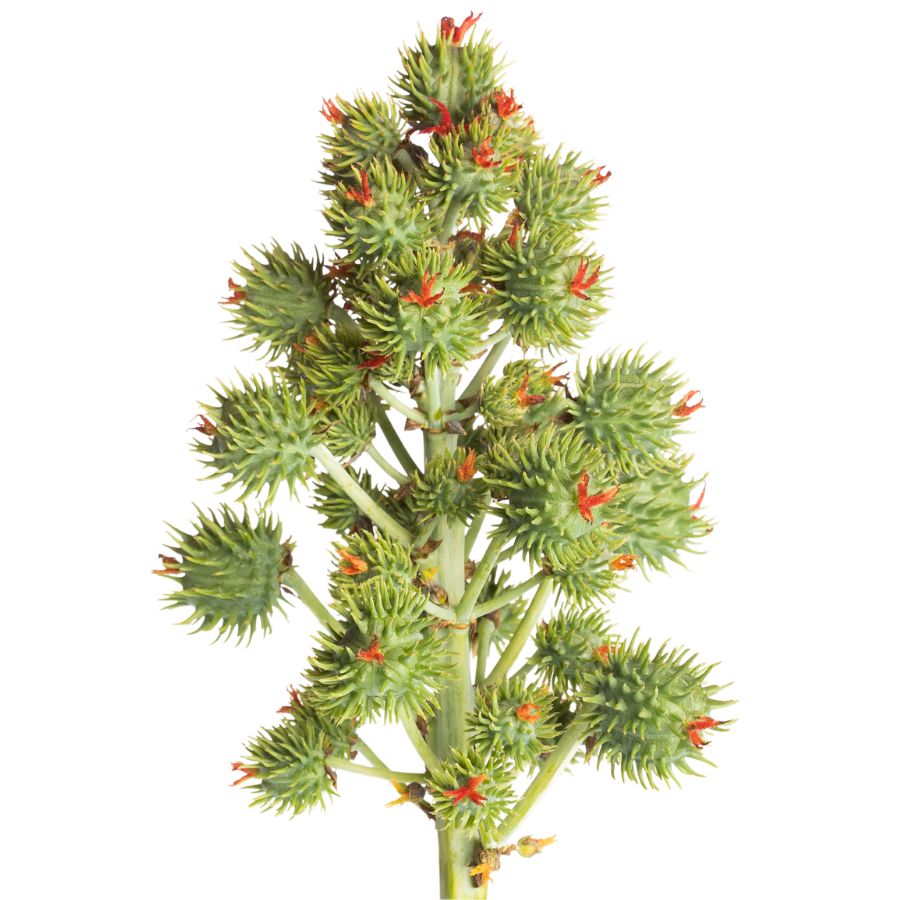
Often mistaken for: Wild rhubarb (Rumex spp. or Rheum spp.)
Castor bean is a bold plant with large, lobed leaves and tall red or green stalks, often found in gardens, along roadsides, and in disturbed areas in warmer regions in the US. Its red-tinged stems and overall size can resemble wild rhubarb to the untrained eye.
Unlike rhubarb, castor bean plants produce spiny seed pods containing glossy, mottled seeds that are extremely toxic. These seeds contain ricin, a deadly compound even in small amounts. While all parts of the plant are toxic, the seeds are especially dangerous and should never be handled or ingested.
A Quick Reminder
Before we get into the specifics about where and how to find these mushrooms, we want to be clear that before ingesting any wild mushroom, it should be identified with 100% certainty as edible by someone qualified and experienced in mushroom identification, such as a professional mycologist or an expert forager. Misidentification of mushrooms can lead to serious illness or death.
All mushrooms have the potential to cause severe adverse reactions in certain individuals, even death. If you are consuming mushrooms, it is crucial to cook them thoroughly and properly and only eat a small portion to test for personal tolerance. Some people may have allergies or sensitivities to specific mushrooms, even if they are considered safe for others.
The information provided in this article is for general informational and educational purposes only. Foraging for wild mushrooms involves inherent risks.
How to Get the Best Results Foraging
Safety should always come first when it comes to foraging. Whether you’re in a rural forest or a suburban greenbelt, knowing how to harvest wild foods properly is a key part of staying safe and respectful in the field.
Always Confirm Plant ID Before You Harvest Anything
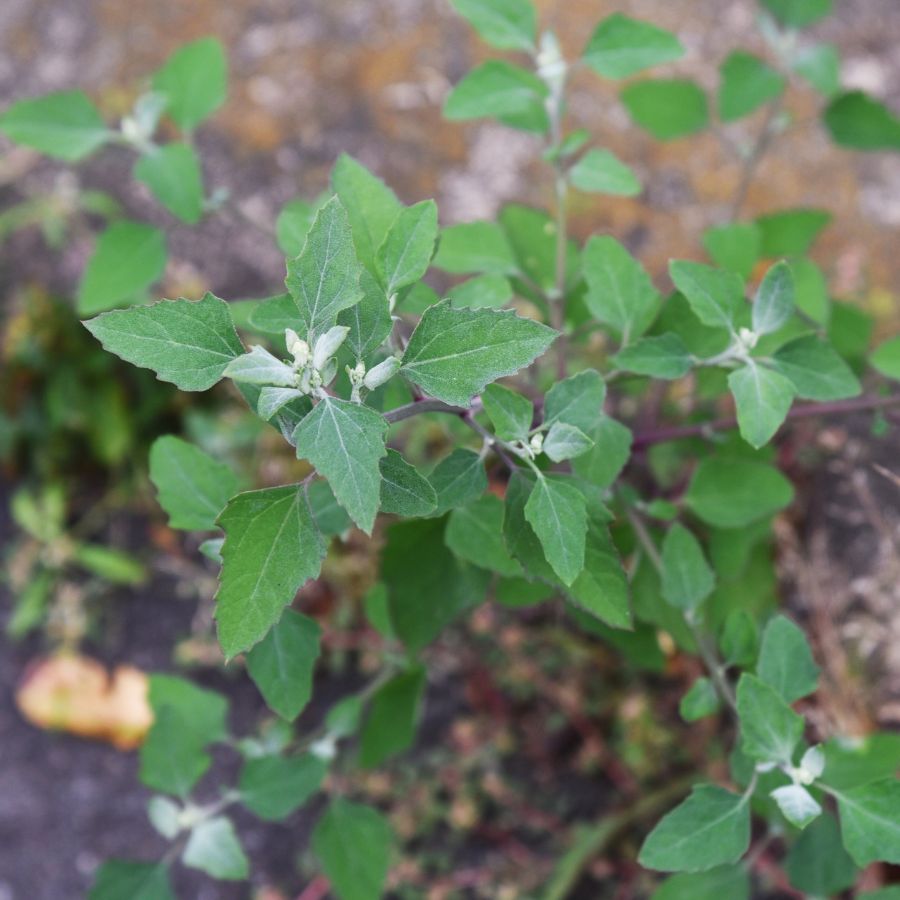
Knowing exactly what you’re picking is the most important part of safe foraging. Some edible plants have nearly identical toxic lookalikes, and a wrong guess can make you seriously sick.
Use more than one reliable source to confirm your ID, like field guides, apps, and trusted websites. Pay close attention to small details. Things like leaf shape, stem texture, and how the flowers or fruits are arranged all matter.
Not All Edible Plants Are Safe to Eat Whole
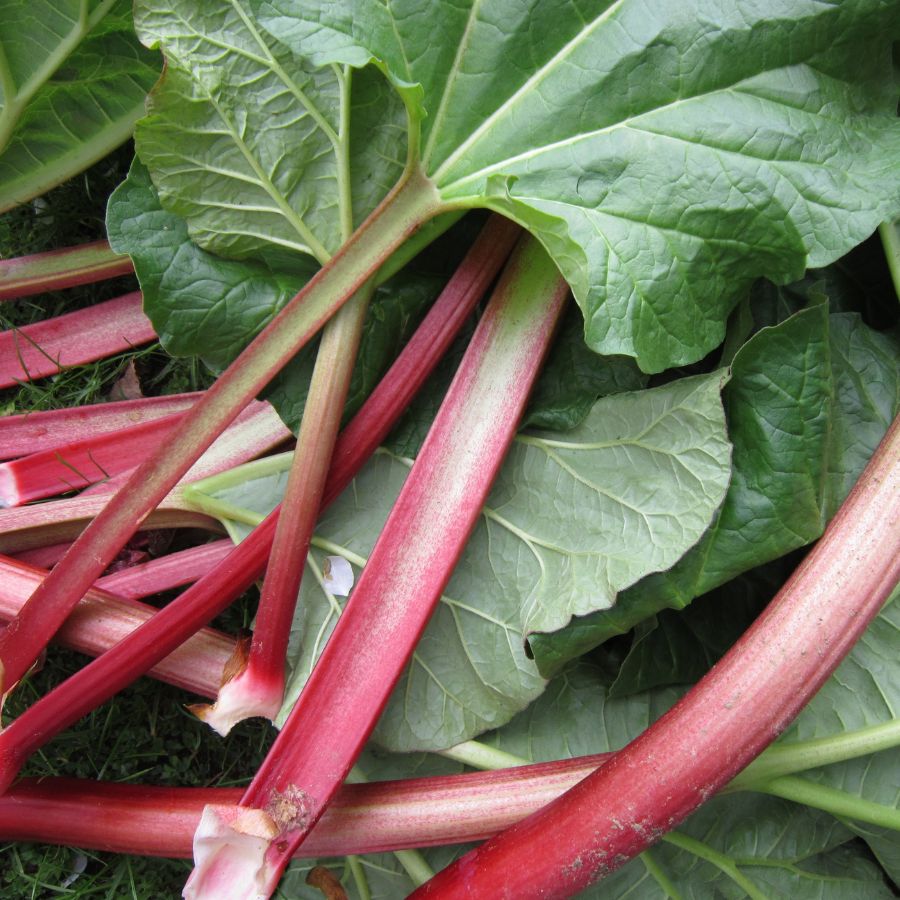
Just because a plant is edible doesn’t mean every part of it is safe. Some plants have leaves, stems, or seeds that can be toxic if eaten raw or prepared the wrong way.
For example, pokeweed is only safe when young and properly cooked, while elderberries need to be heated before eating. Rhubarb stems are fine, but the leaves are poisonous. Always look up which parts are edible and how they should be handled.
Avoid Foraging in Polluted or Contaminated Areas
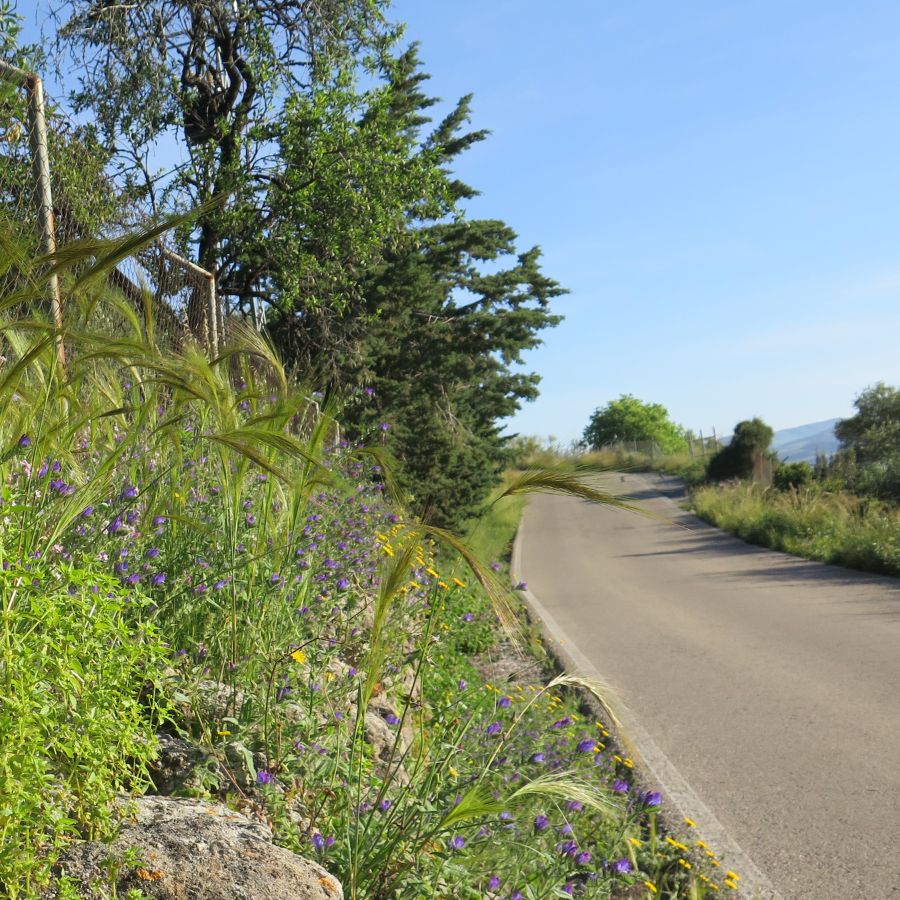
Where you forage matters just as much as what you pick. Plants growing near roads, buildings, or farmland might be coated in chemicals or growing in polluted soil.
Even safe plants can take in harmful substances from the air, water, or ground. Stick to clean, natural areas like forests, local parks that allow foraging, or your own yard when possible.
Don’t Harvest More Than What You Need
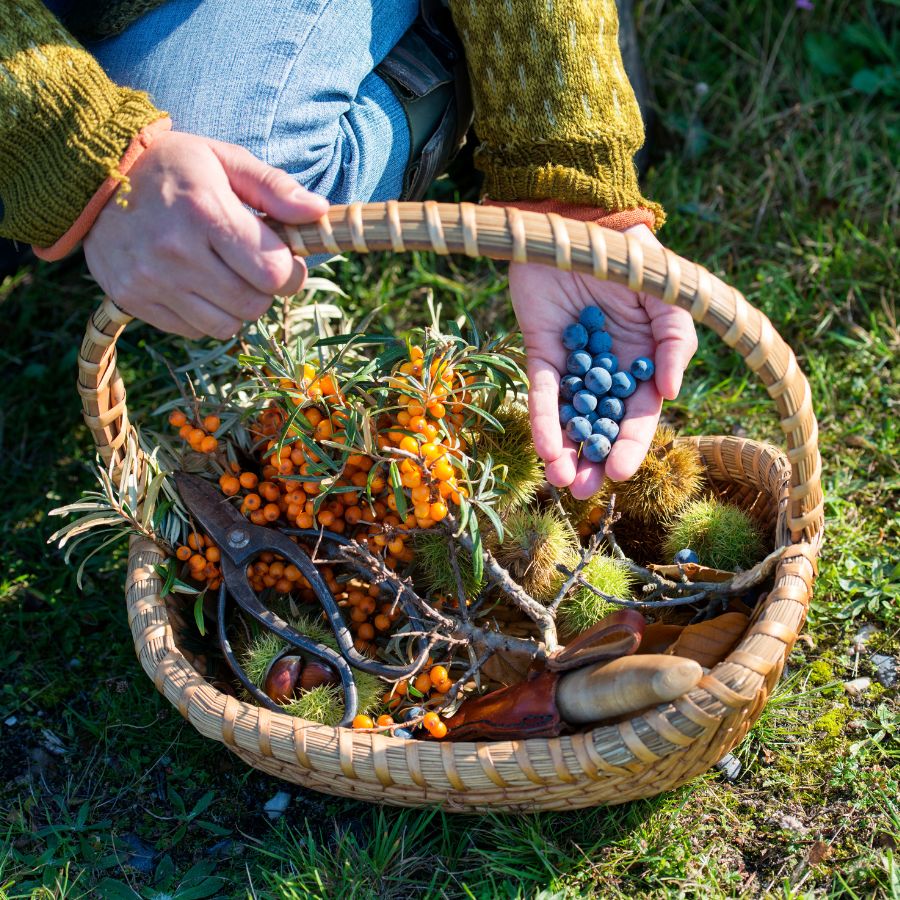
When you forage, take only what you plan to use. Overharvesting can hurt local plant populations and reduce future growth in that area.
Leaving plenty behind helps plants reproduce and supports wildlife that depends on them. It also ensures other foragers have a chance to enjoy the same resources.
Protect Yourself and Your Finds with Proper Foraging Gear
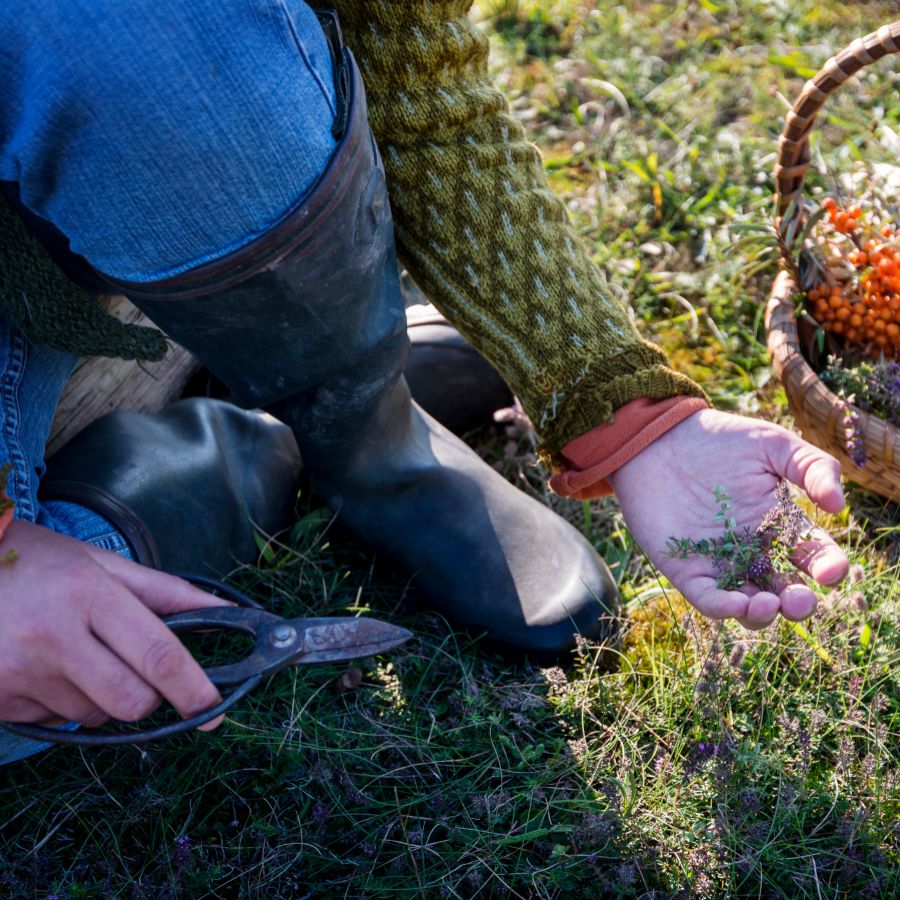
Having the right tools makes foraging easier and safer. Gloves protect your hands from irritants like stinging nettle, and a good knife or scissors lets you harvest cleanly without damaging the plant.
Use a basket or breathable bag to carry what you collect. Plastic bags hold too much moisture and can cause your greens to spoil before you get home.
This forager’s toolkit covers the essentials for any level of experience.
Watch for Allergic Reactions When Trying New Wild Foods

Even if a wild plant is safe to eat, your body might react to it in unexpected ways. It’s best to try a small amount first and wait to see how you feel.
Be extra careful with kids or anyone who has allergies. A plant that’s harmless for one person could cause a reaction in someone else.
Check Local Rules Before Foraging on Any Land
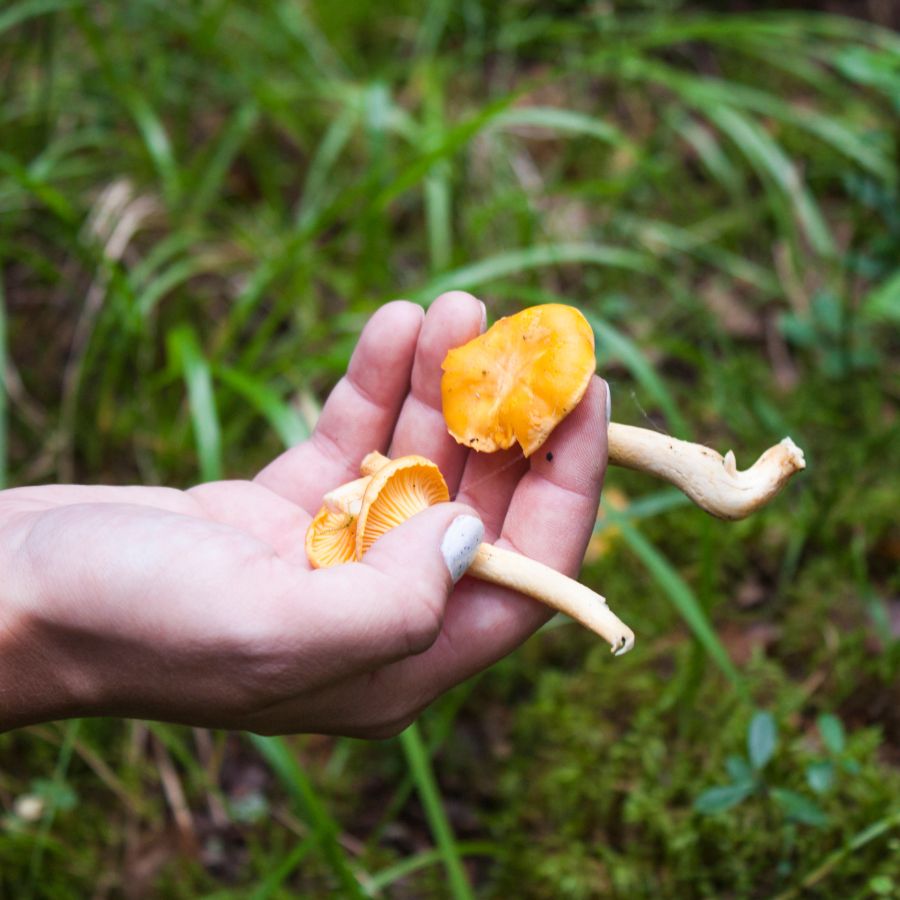
Before you start foraging, make sure you know the rules for the area you’re in. What’s allowed in one spot might be completely off-limits just a few miles away.
Some public lands permit limited foraging, while others, like national parks, usually don’t allow it at all. If you’re on private property, always get permission first.
Before you head out
Before embarking on any foraging activities, it is essential to understand and follow local laws and guidelines. Always confirm that you have permission to access any land and obtain permission from landowners if you are foraging on private property. Trespassing or foraging without permission is illegal and disrespectful.
For public lands, familiarize yourself with the foraging regulations, as some areas may restrict or prohibit the collection of mushrooms or other wild foods. These regulations and laws are frequently changing so always verify them before heading out to hunt. What we have listed below may be out of date and inaccurate as a result.
Where to Find Forageables in the State
There is a range of foraging spots where edible plants grow naturally and often in abundance:
| Plant | Locations |
|---|---|
| Chokecherry (Prunus virginiana) | – Curt Gowdy State Park – Bighorn Canyon National Recreation Area – Vedauwoo Recreation Area |
| Serviceberry (Amelanchier alnifolia) | – Snowy Range near Centennial – Shell Canyon – Medicine Bow National Forest |
| Thimbleberry (Rubus parviflorus) | – Togwotee Pass – Grand Teton National Park – Beartooth Highway pullouts |
| Wild Strawberry (Fragaria virginiana) | – Black Hills National Forest (WY section) – Keyhole State Park – Curt Gowdy trailsides |
| Buffaloberry (Shepherdia canadensis) | – Glendo State Park – Gros Ventre Wilderness – Boysen Reservoir area |
| Cloudberry (Rubus chamaemorus) | – Absaroka Range wetlands – Yellowstone Lake edges – Two Ocean Plateau |
| Wild Rose (Rosa woodsii) | – Hawk Springs Recreation Area – Jackson Hole valley – Casper Mountain trails |
| Fireweed (Chamerion angustifolium) | – Sinks Canyon State Park – Teton Pass – Snow King Mountain area |
| Arrowleaf Balsamroot (Balsamorhiza sagittata) | – Wind River Range foothills – Red Grade Trails (Bighorns) – Dubois Badlands |
| Spring Beauty (Claytonia lanceolata) | – Crazy Woman Canyon – Shoshone National Forest – Big Sandy Opening |
| Yampa (Perideridia gairdneri) | – Pathfinder National Wildlife Refuge – Bridger-Teton National Forest – Laramie Plains |
| Western Sweet Cicely (Osmorhiza occidentalis) | – Cascade Canyon – Circle Park Trailhead (Bighorns) – Popo Agie Falls trail |
| Salsify (Tragopogon dubius) | – Wheatland Reservoir No. 3 – Casper city greenbelts – Douglas outskirts |
| Evening Primrose (Oenothera biennis) | – Seminoe Reservoir – Buffalo Bill State Park – Hanna Basin |
| Prickly Pear Cactus (Opuntia polyacantha) | – Red Desert – Devils Tower National Monument – Thermopolis grasslands |
| Pinyon Pine (Pinus edulis) | – Southwest Flaming Gorge rim – Henrys Fork area – Little Mountain WSA |
| Cattail (Typha latifolia) | – Hutton Lake NWR – Fontenelle Reservoir – Lake DeSmet marshes |
| Dandelion (Taraxacum officinale) | – Jackson city parks – Riverton roadside meadows – Gillette community trails |
| Stinging Nettle (Urtica dioica) | – Laramie River greenbelt – Moose-Wilson Road (GTNP) – North Fork Tongue River |
| Lamb’s Quarters (Chenopodium album) | – Rock Springs vacant lots – Powell irrigation ditches – Lovell community gardens |
| Curly Dock (Rumex crispus) | – Boulder Lake access area – New Fork River edges – Torrington riverbanks |
| Purslane (Portulaca oleracea) | – Cheyenne alleyways – Evanston community gardens – Green River town parks |
| Wood Sorrel (Oxalis stricta) | – Happy Jack Trail – Snow King chairlift base – Lander city shade trails |
| Chickweed (Stellaria media) | – Sheridan community gardens – Cody backyard plots – Worland shaded lawns |
| Wild Onion (Allium textile) | – Guernsey State Park – Teton Wilderness edges – Rocky Mountain foothills near Baggs |
| Gooseberry (Ribes inerme) | – Trail Ridge area – Hoback River basin – Meeteetse ridgelines |
| Wax Currant (Ribes cereum) | – Granite Creek drainage – Bald Mountain Campground – Pinedale uplands |
| Red Clover (Trifolium pratense) | – Hulett roadside meadows – Star Valley ranch edges – Sheridan College lawn fringes |
| Alfalfa (Medicago sativa) | – Torrington field borders – Basin town outskirts – Kaycee roadside embankments |
| Wild Licorice (Glycyrrhiza lepidota) | – Buffalo wetlands – Sweetwater River bendlands – Douglas prairie thickets |
| Mountain Sorrel (Oxyria digyna) | – Alpine Lakes Basin – Snowy Range alpine meadows – Cloud Peak Wilderness |
| Wild Bergamot (Monarda fistulosa) | – Sunlight Basin – North Platte River corridor – Beaver Rim |
| Common Blue Camas (Camassia quamash) | – Star Valley wet meadows – Yellowstone’s south entrance valley – Meadow Lake flats |
| Common Plantain (Plantago major) | – Thermopolis town paths – Pinedale sidewalks – Greybull park edges |
| Western Dock (Rumex occidentalis) | – Bitter Creek banks – Bighorn River near Manderson – Upper Sunshine Reservoir |
| Wild Mint (Mentha arvensis) | – Snake River islands – Pine Creek in Pinedale – Laramie Wetlands Project area |
| Nodding Onion (Allium cernuum) | – Elk Mountain foothills – Beartooth Pass alpine ridges – Sinks Canyon slopes |
| Common Sunflower (Helianthus annuus) | – Casper windbreaks – Shirley Basin – Yellowtail Wildlife Habitat |
| Ground Cherry (Physalis longifolia) | – Rattlesnake Range – Buffalo Creek drainage – Wheatland hillsides |
| Jerusalem Artichoke (Helianthus tuberosus) | – North Platte banks near Saratoga – Torrington riparian zones – Kaycee river edge |
| Wild Raspberry (Rubus idaeus strigosus) | – South Fork Shoshone River – Alcova Reservoir trails – Piney Creek drainage |
| Mountain Huckleberry (Vaccinium membranaceum) | – Teton Crest Trail – Crater Lake Trail – Absaroka-Beartooth Wilderness |
| Dwarf Bilberry (Vaccinium cespitosum) | – Greys River area – Middle Fork Powder River – Paintrock Lake |
| Fernleaf Biscuitroot (Lomatium dissectum) | – Red Canyon – Wind River foothills – Gravelly Hills (SW WY) |
| Broadleaf Arrowhead (Sagittaria latifolia) | – Saratoga Hot Springs wetlands – Boysen Reservoir shallows – Bear River Greenway |
Peak Foraging Seasons
Different edible plants grow at different times of year, depending on the season and weather. Timing your search makes all the difference.
Spring
Spring brings a fresh wave of wild edible plants as the ground thaws and new growth begins:
| Plant | Months | Best Weather Conditions |
|---|---|---|
| Spring beauty (Claytonia lanceolata) | March–May | Cool, damp forest floor |
| Dandelion (Taraxacum officinale) | March–May | Sunny openings, disturbed soil |
| Stinging nettle (Urtica dioica) | April–June | Shady, moist woodland edges |
| Wild onion (Allium textile) | April–May | Sunny hillsides and rocky outcrops |
| Curly dock (Rumex crispus) | April–May | Moist meadows and riverbanks |
| Common plantain (Plantago major) | April–June | Disturbed areas with partial sun |
| Yampa (Perideridia gairdneri) | April–May | Sunny meadows, often in valleys |
| Western sweet cicely (Osmorhiza occidentalis) | May | Shaded streamside trails |
Summer
Summer is a peak season for foraging, with fruits, flowers, and greens growing in full force:
| Plant | Months | Best Weather Conditions |
|---|---|---|
| Chokecherry (Prunus virginiana) | July–August | Sunny forest edges and slopes |
| Serviceberry (Amelanchier alnifolia) | June–July | Open woods and hillsides |
| Thimbleberry (Rubus parviflorus) | July–August | Moist mountain forest edges |
| Wild strawberry (Fragaria virginiana) | June–July | Sunny forest clearings |
| Fireweed (Chamerion angustifolium) | June–August | Recently burned or cleared areas |
| Lamb’s quarters (Chenopodium album) | June–August | Sunny disturbed soils |
| Salsify (Tragopogon dubius) | June–July | Dry, open fields and roadsides |
| Wild bergamot (Monarda fistulosa) | July–August | Sunny hillsides and open woods |
Fall
As temperatures drop, many edible plants shift underground or produce their last harvests:
| Plant | Months | Best Weather Conditions |
|---|---|---|
| Buffaloberry (Shepherdia canadensis) | August–September | Open slopes and woodland edges |
| Evening primrose (Oenothera biennis) | September | Dry, rocky or sandy soils |
| Ground cherry (Physalis longifolia) | August–October | Dry, open fields |
| Jerusalem artichoke (Helianthus tuberosus) | September–October | Moist woodland and stream edges |
| Fernleaf biscuitroot (Lomatium dissectum) | September | Dry, rocky hillsides |
| Broadleaf arrowhead (Sagittaria latifolia) | September–October | Shallow water or marsh edges |
| Western dock (Rumex occidentalis) | September | Wet meadows or creek sides |
| Mountain huckleberry (Vaccinium membranaceum) | August–September | Moist alpine forests |
Winter
Winter foraging is limited but still possible, with hardy plants and preserved growth holding on through the cold:
| Plant | Months | Best Weather Conditions |
|---|---|---|
| Wild rose (Rosa woodsii) | December–February | Dried hips on shrubs in open areas |
| Cattail (Typha latifolia) | November–March | Frozen marshes and wetland edges |
| Prickly pear cactus (Opuntia polyacantha) | December–March | Sunny, dry prairies |
| Wild licorice (Glycyrrhiza lepidota) | November–February | Moist soil near streams |
| Arrowleaf balsamroot (Balsamorhiza sagittata) | December–February | Dry, grassy slopes |
| Alfalfa (Medicago sativa) | January–March (overwintered) | Snow-covered fields and roadsides |
One Final Disclaimer
The information provided in this article is for general informational and educational purposes only. Foraging for wild plants and mushrooms involves inherent risks. Some wild plants and mushrooms are toxic and can be easily mistaken for edible varieties.
Before ingesting anything, it should be identified with 100% certainty as edible by someone qualified and experienced in mushroom and plant identification, such as a professional mycologist or an expert forager. Misidentification can lead to serious illness or death.
All mushrooms and plants have the potential to cause severe adverse reactions in certain individuals, even death. If you are consuming foraged items, it is crucial to cook them thoroughly and properly and only eat a small portion to test for personal tolerance. Some people may have allergies or sensitivities to specific mushrooms and plants, even if they are considered safe for others.
Foraged items should always be fully cooked with proper instructions to ensure they are safe to eat. Many wild mushrooms and plants contain toxins and compounds that can be harmful if ingested.

